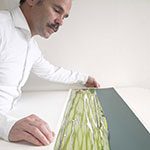
Art prints with bird as subjects: Bird Art
In 2007 I moved from London to Brighton. I didn’t realise but every time I was on a call to my mum she would notice the sound of the seagulls in the background. I grew up in Tarifa, a small city in the south of Spain with a large fishing harbour. In Brighton I was again experiencing the noises of my childhood. Sound is an interesting sense. If you close your eyes you can transport yourself to places in the past where you heard similar noises interacting with your memory from a present experience.
One of my first art prints depicted seagulls nested in the roof of my house in Brighton. I love to create prints from scenes near me, marvelling at the qualities of the world surrounding us.
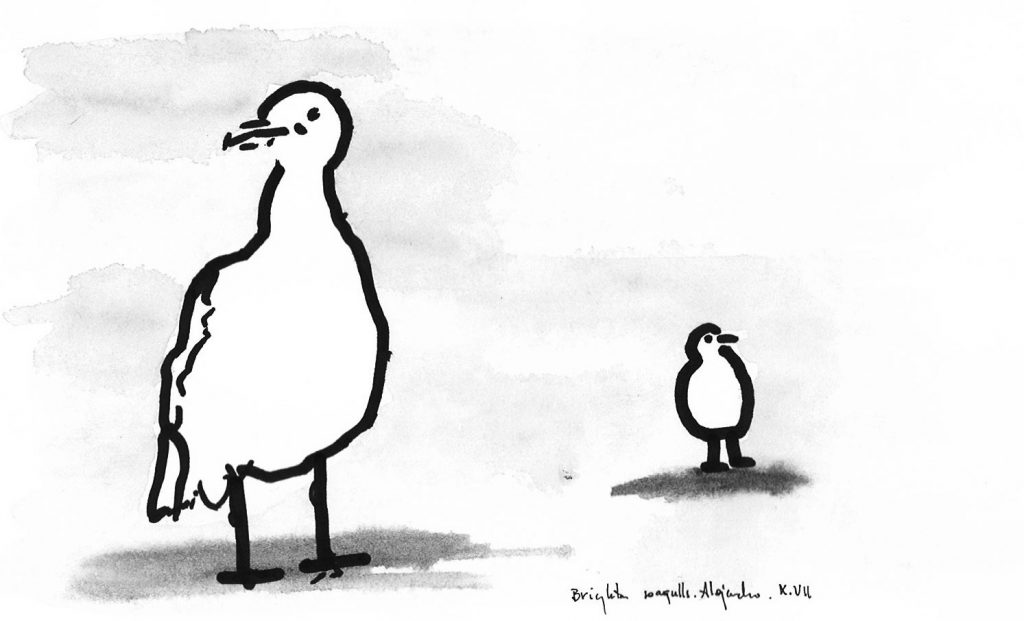
Bird books
Below I show some books I keep in my library. I am most interested in old books prior to the invention of photography when the only means to reproduce images were etchings or woodcuts. To learn to draw and create art prints of birds I have not only learnt from studying the natural world but I have also studied how artists in history have created incredibly beautiful work.

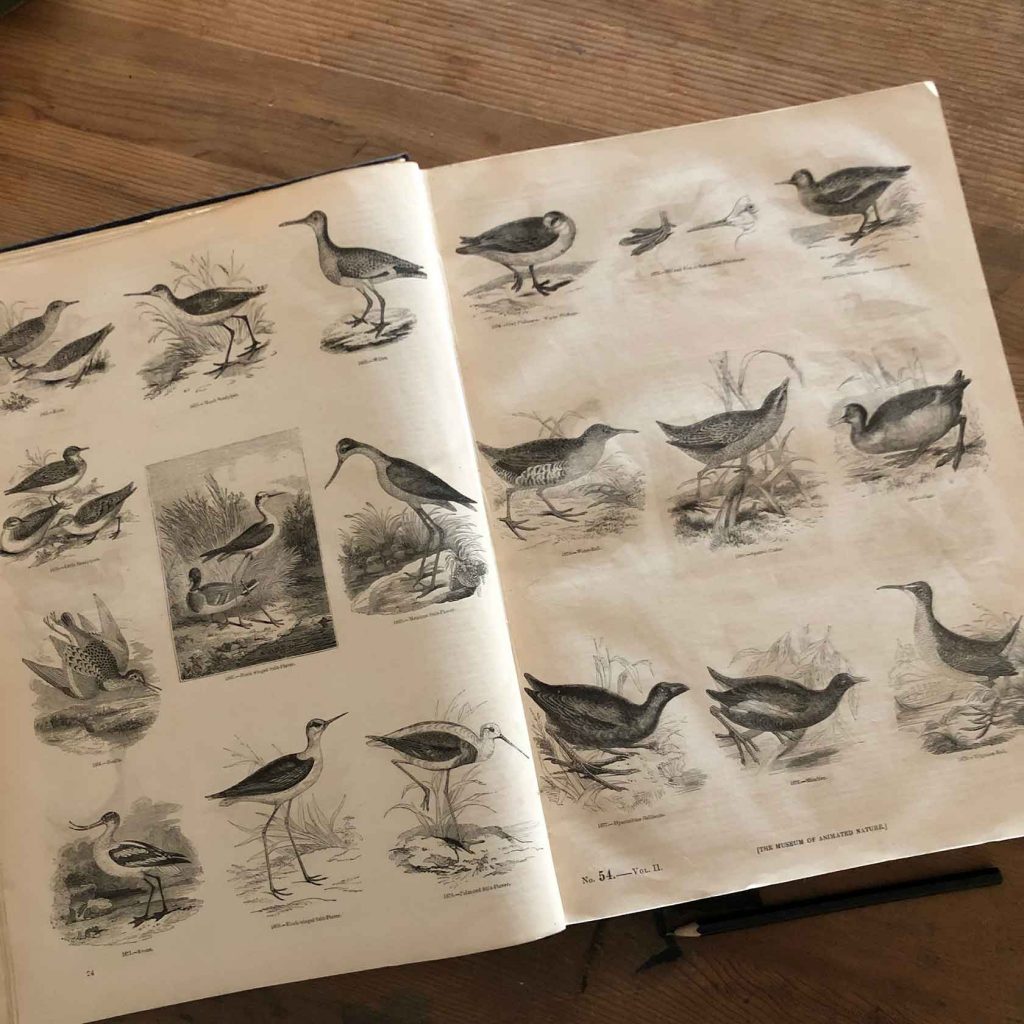
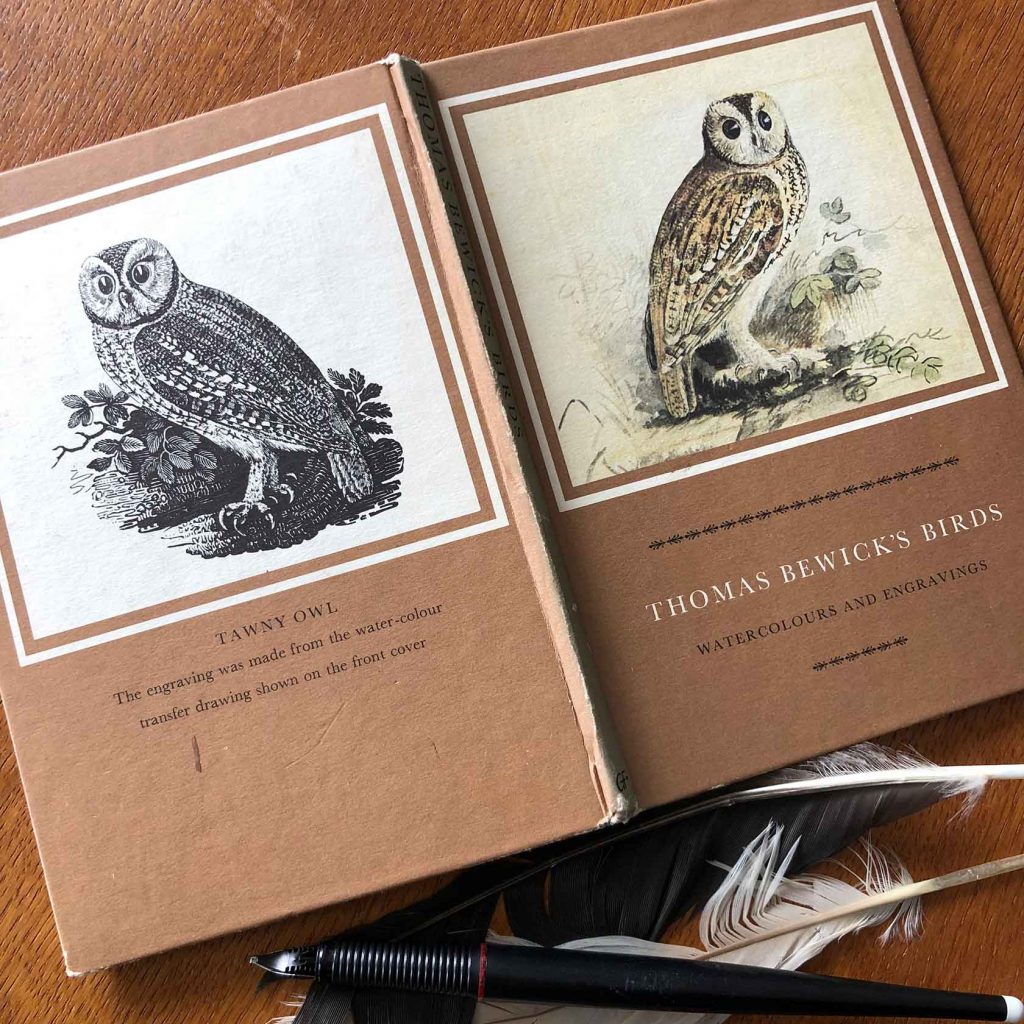
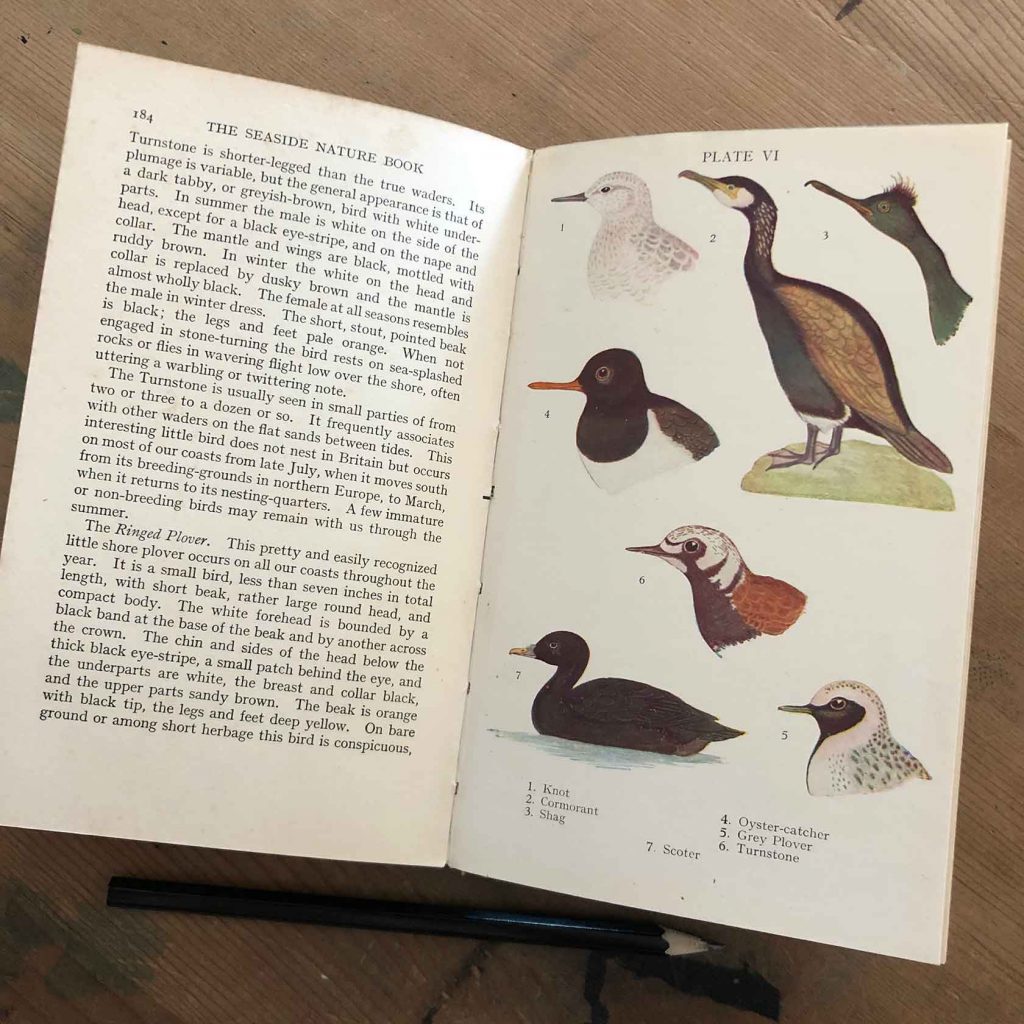
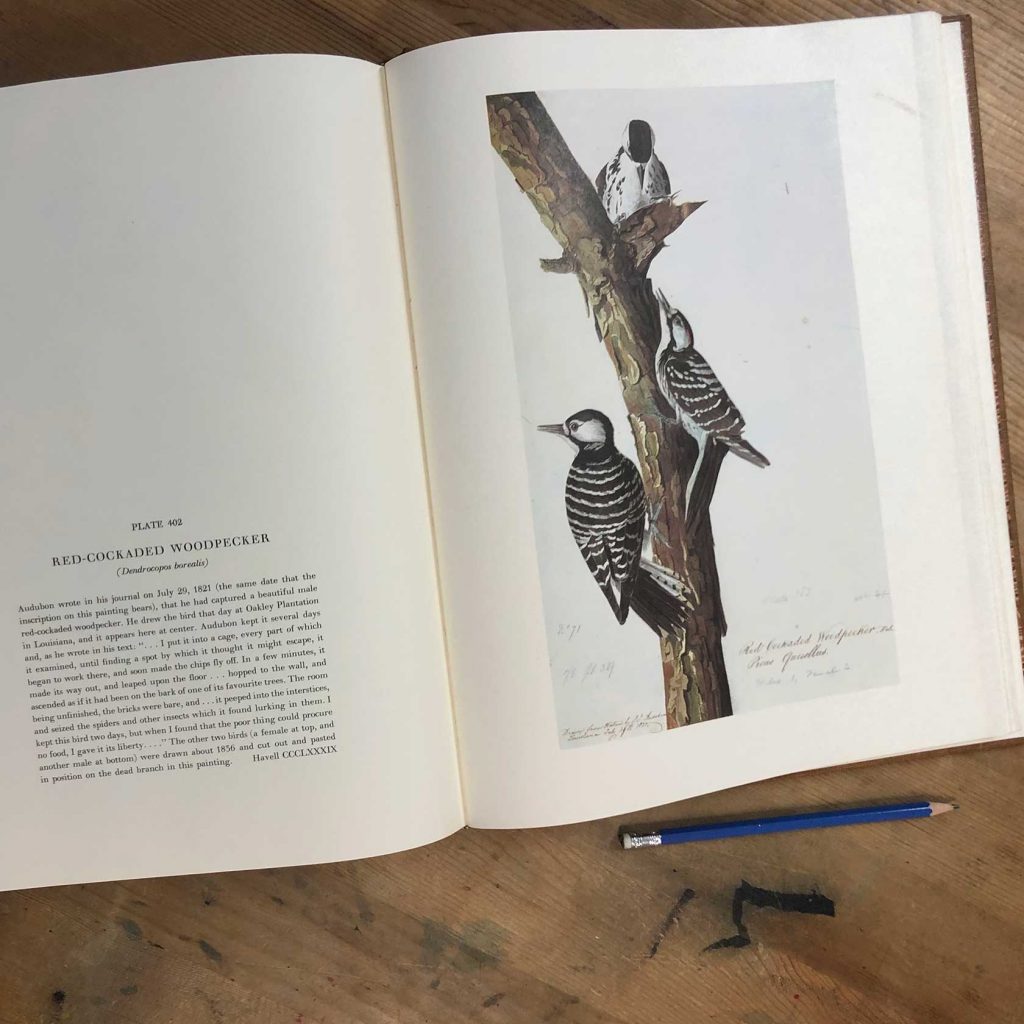

Bird print
Art prints inspired by the natural word and the study of bird illustrations
In January 2021, in a second-hand bookshop I found the second volume of a lavish 1966 publication that reproduced the famous original watercolour paintings by John James Audubon for ‘Birds of America’. I was surprised to realise that to complete one of his designs could take years and often various artists would be involved. Audubon would create the main image and other artists would do the plants and another would add the landscape. With this mindset I have created three new prints that follow this system and create a scene that collages a landscape or habitat with its characteristic plants and birds. The results are a print that echoes a theatre stage design where each subject is depicted at its best in unison.
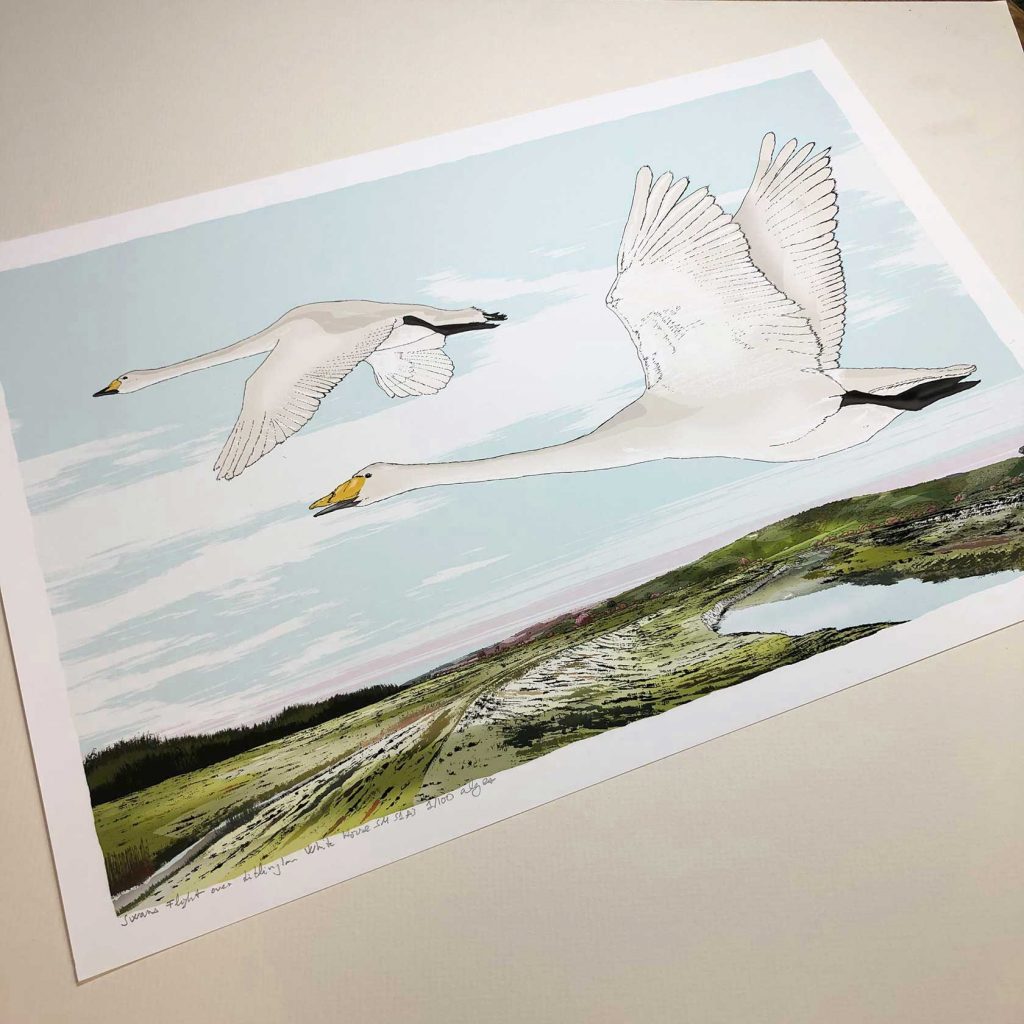
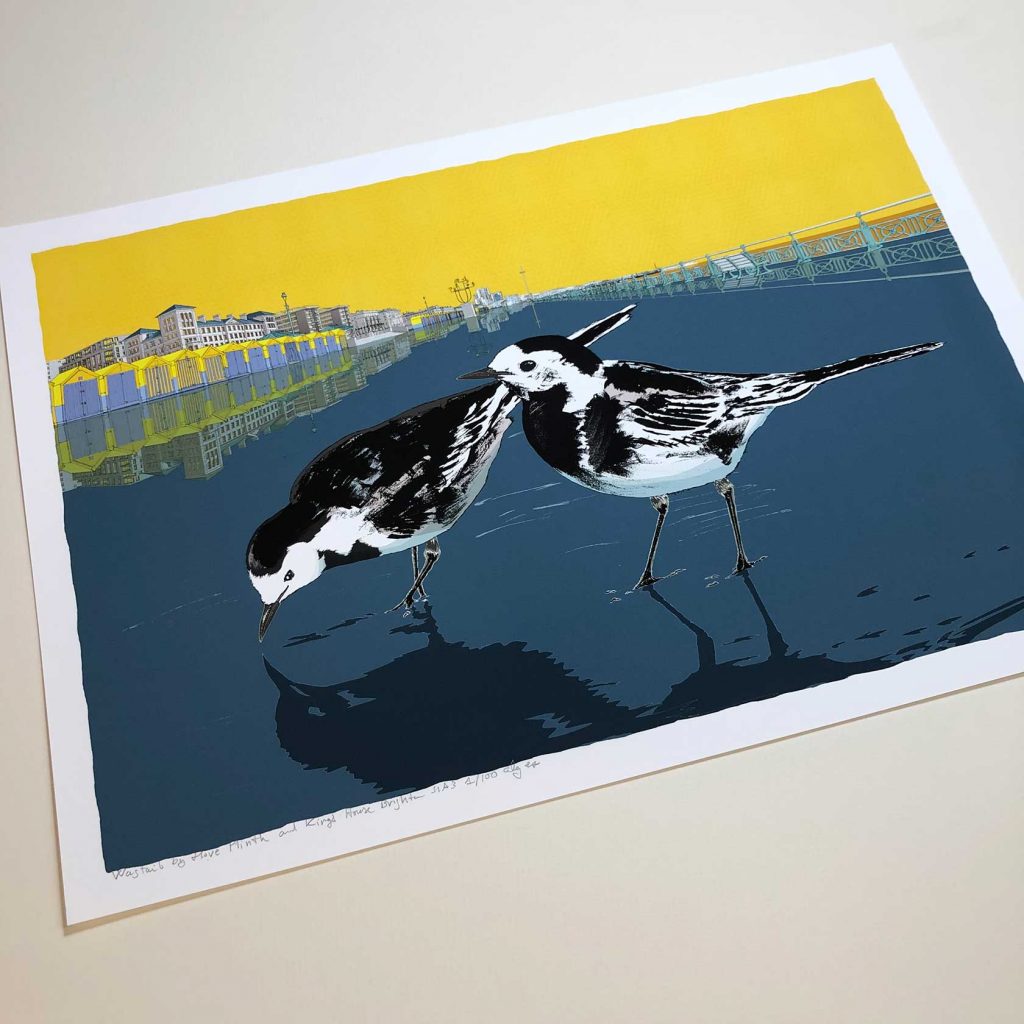
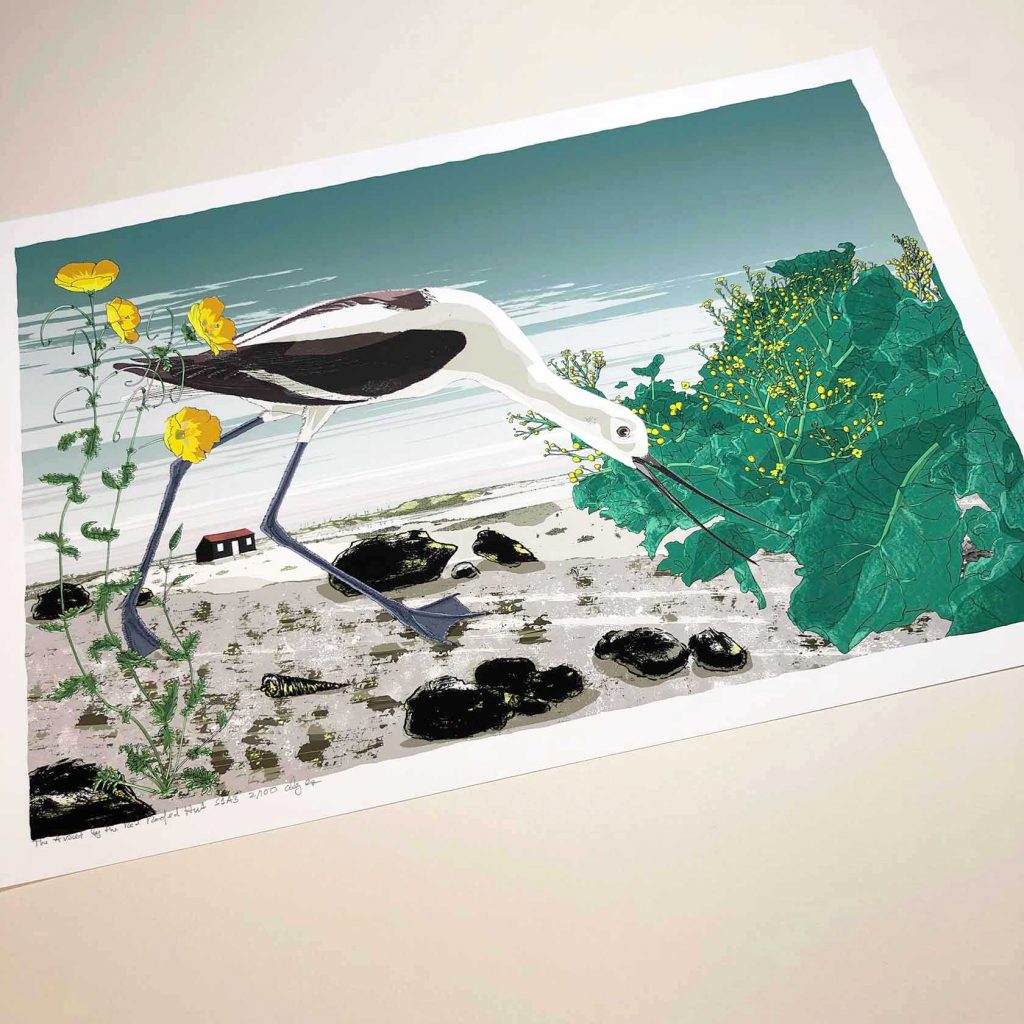
Museum Birds
Other sources of inspiration and learning are the study of the actual work of arts, where closer meticulous inspection is possible along with the recognition of the complete body of work of an artist. As an example I show some images from two visits. One from the Japanese wing at the British Museum in London and the other from the Brighton Royal Pavilion where I focused on the depiction of birds.

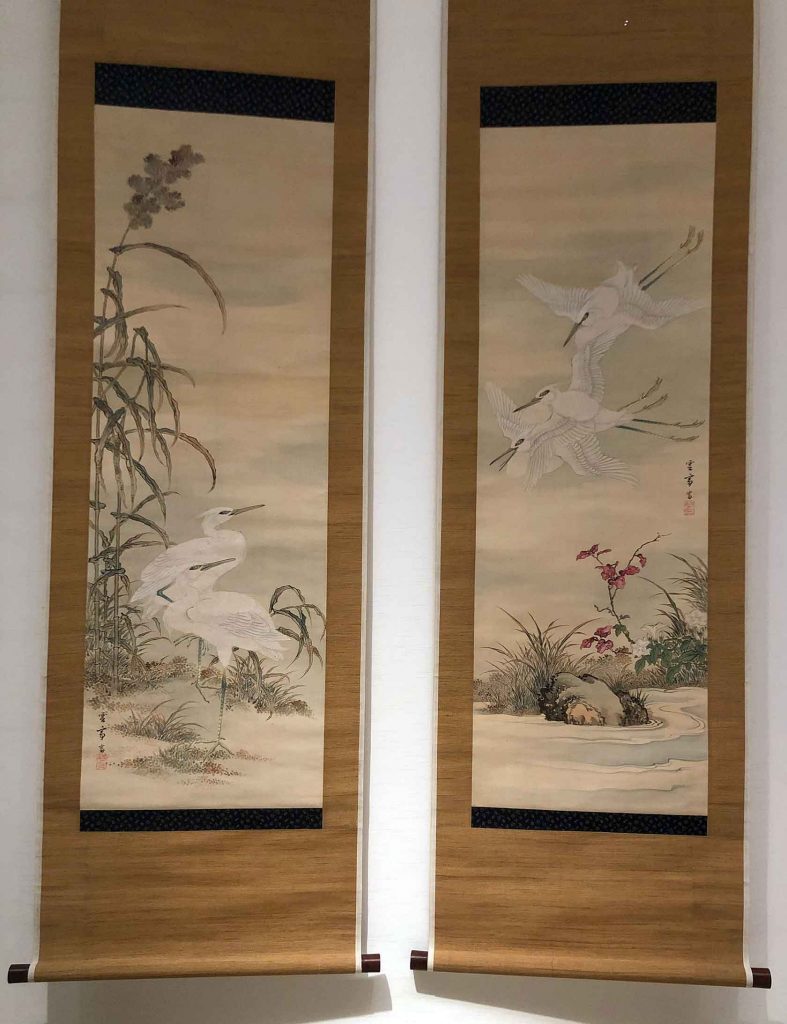
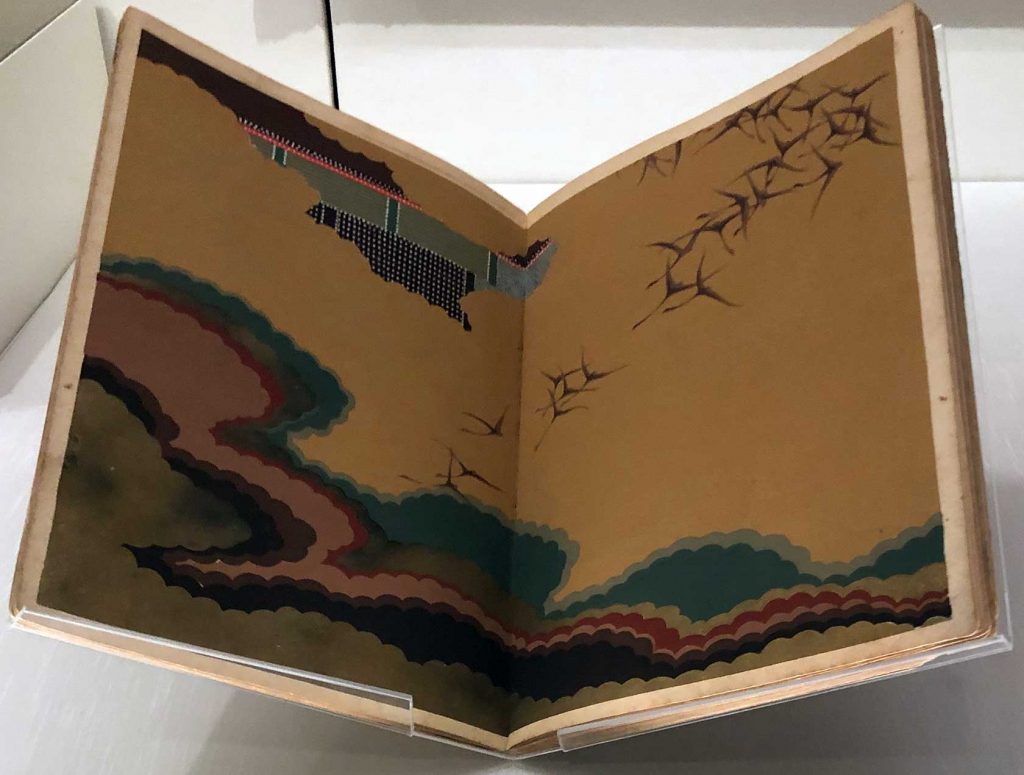
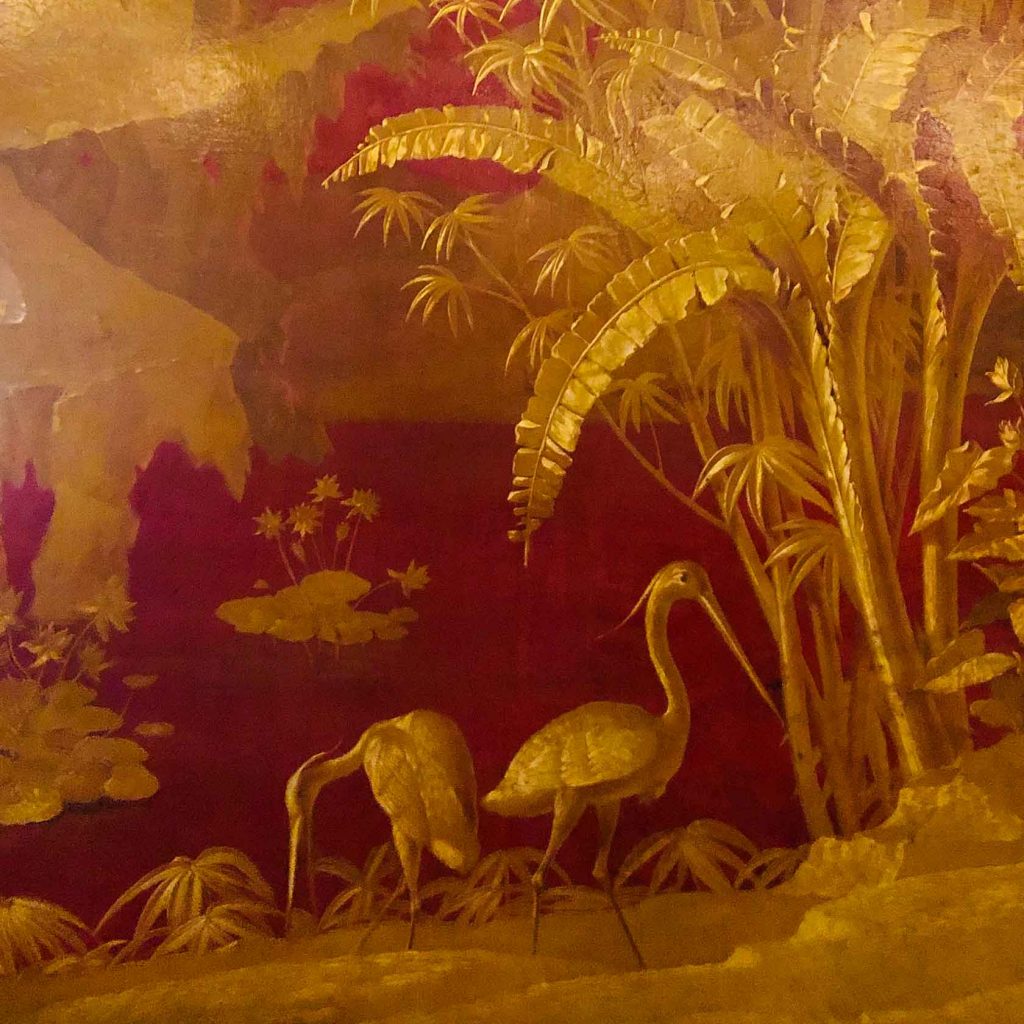
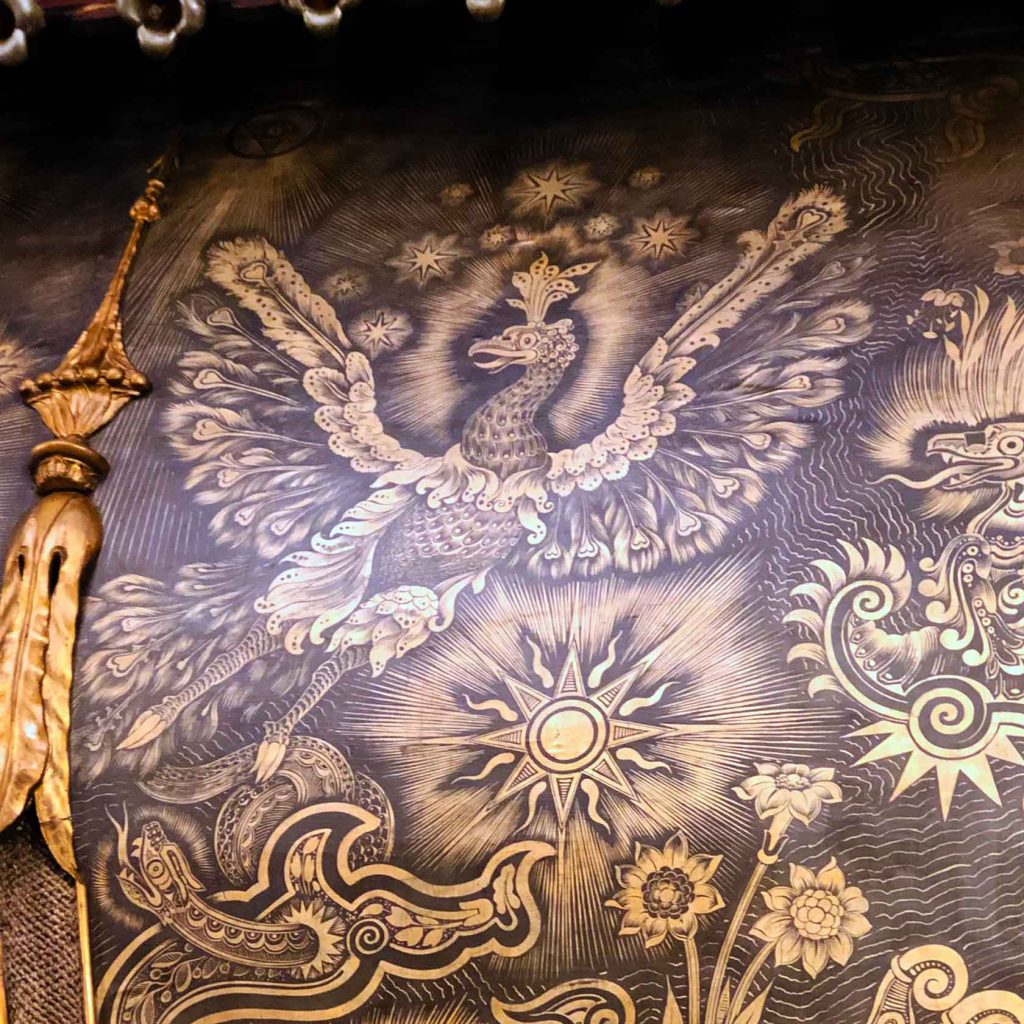
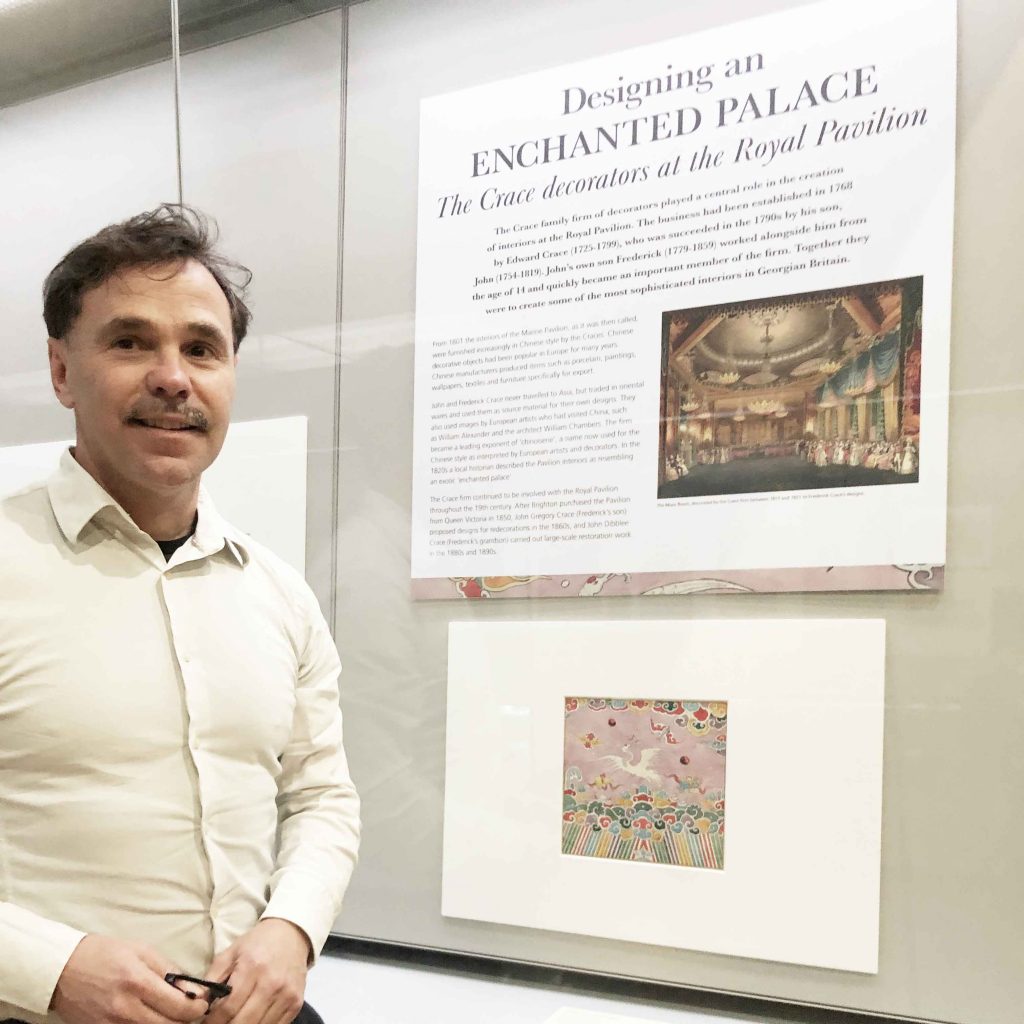
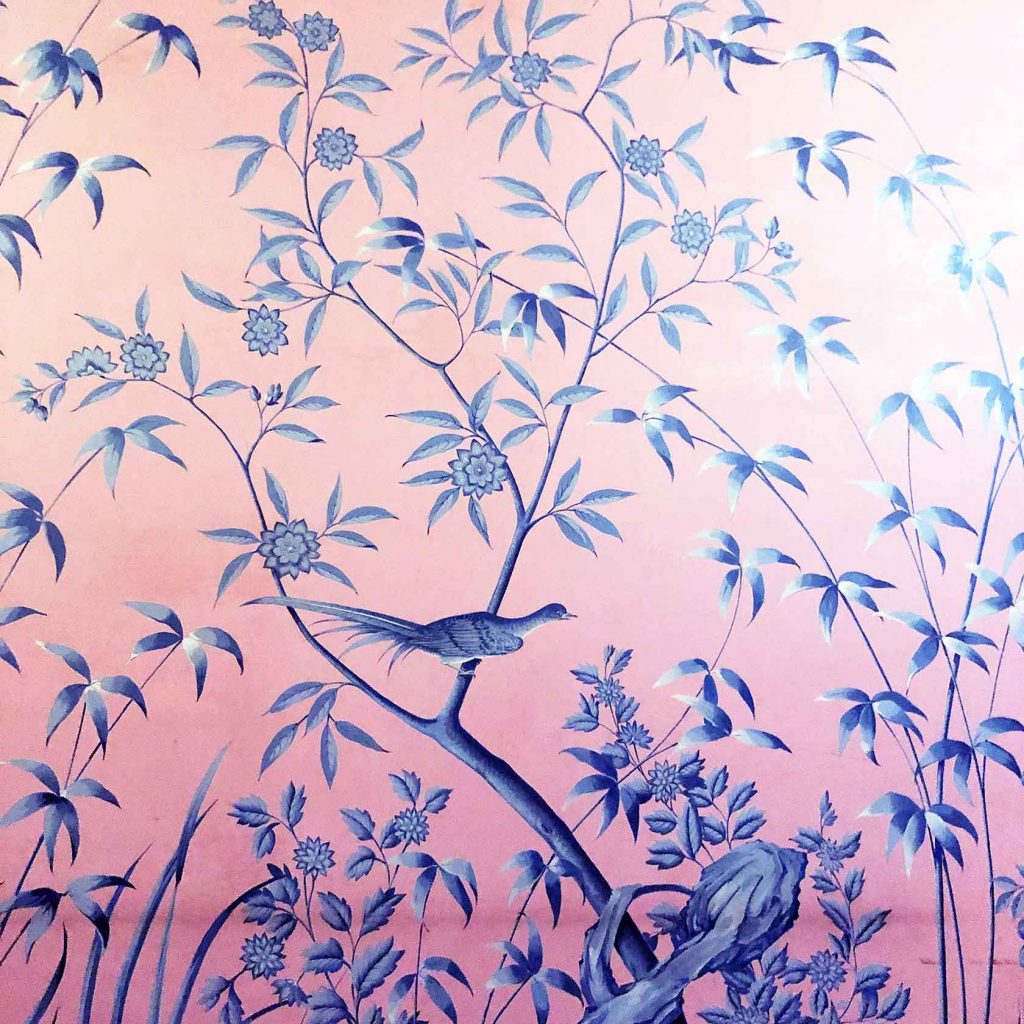
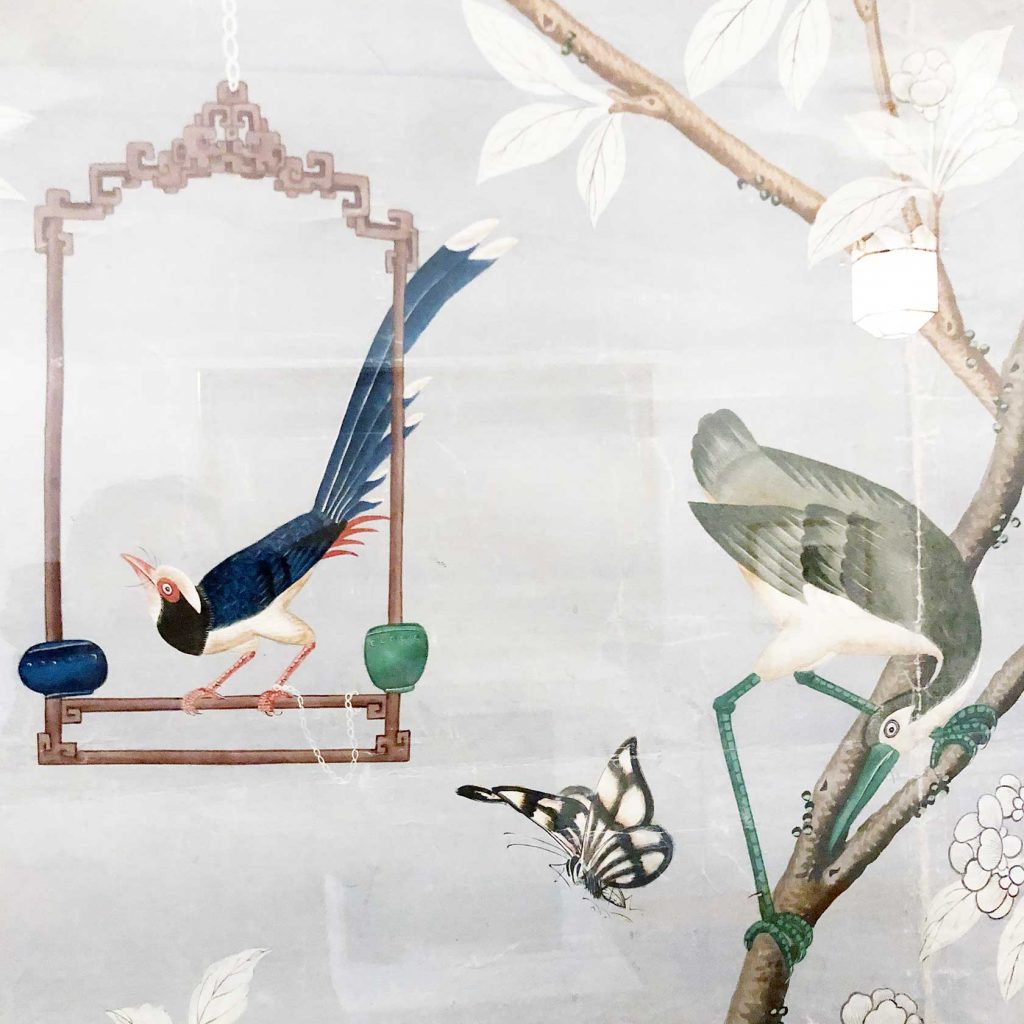
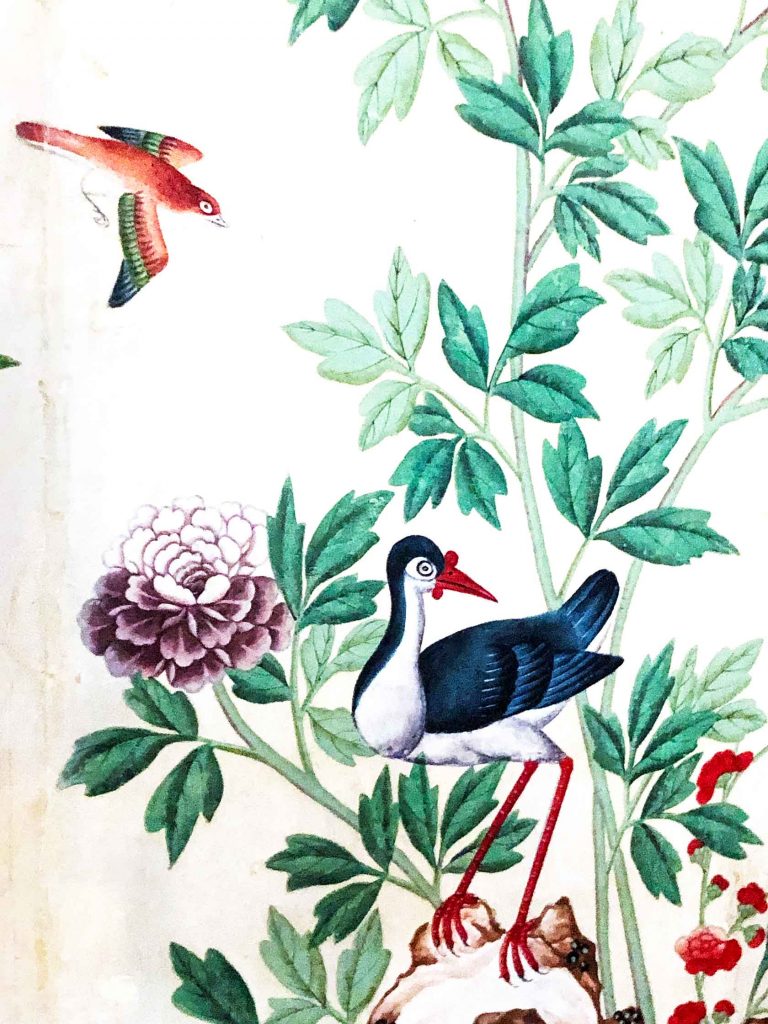
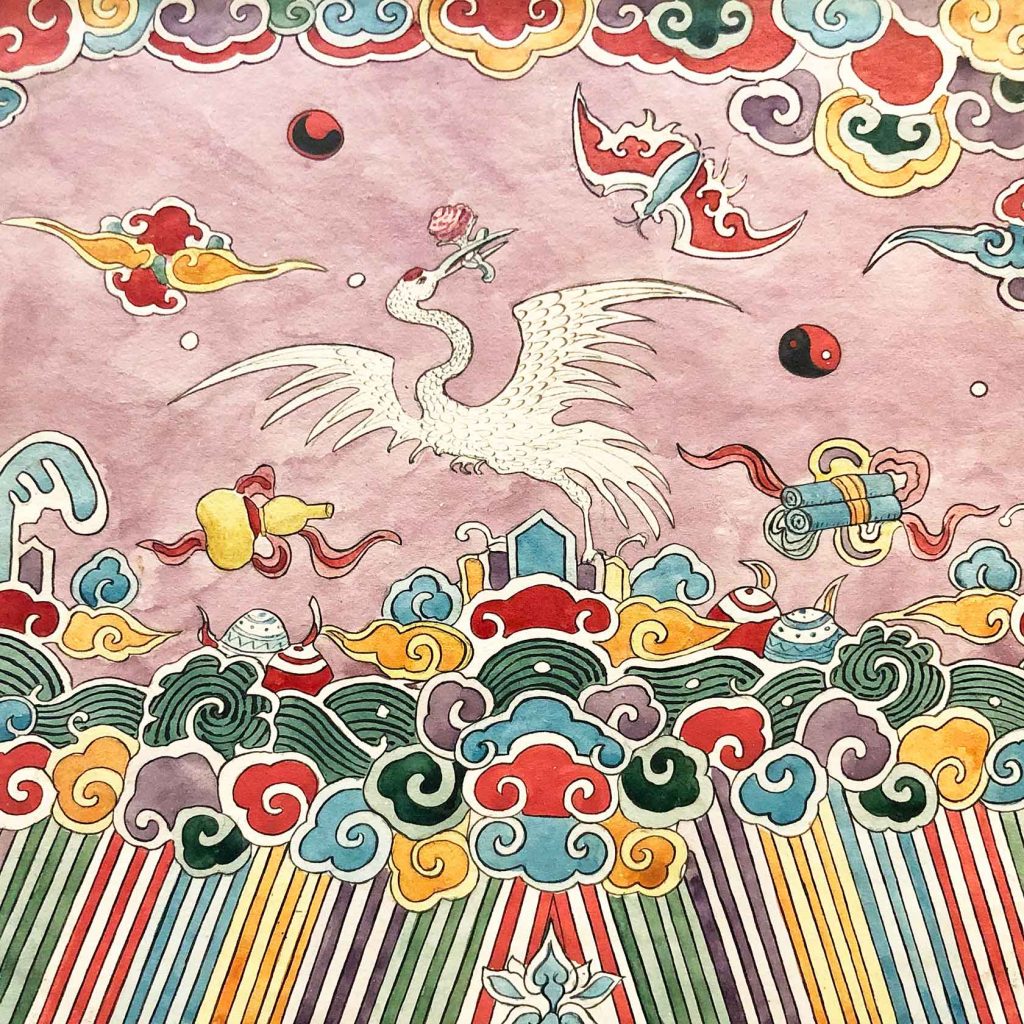
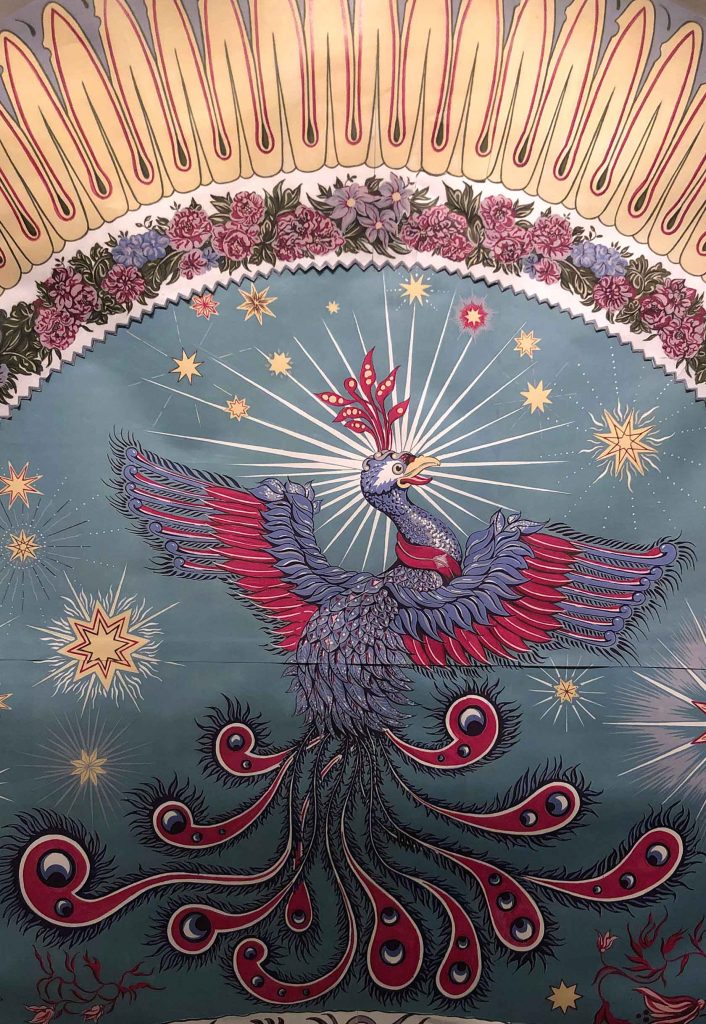
Bird Art
Birds have been central to legends and traditions. My approach to create these three prints looks overseas at Japanese art and chinoiserie style. The settings however are well-known architectural iconic and historic buildings in Brighton: The Royal Pavilion, Palace Pier and the remains of the West Pier. The reason why I have chosen to depict the herons in front of the Pavilion is because historically, the banks of the Steine river formed the East boundary of the Brighton Pavilion Gardens, very near the sea. This marshland, often flooded with the tides, is the usual habitat of the herons. On the other hand the starlings roost under the Palace Pier every night through winter. The mild UK winters attract starlings that come from East Europe. In the past the starlings used to roost in big trees in Steine Gardens, next to the Brighton Pavilion, but the storm of 1987 felled many trees and they moved to the West Pier. When the West Pier burnt down in 2003, the starlings again moved their roosting place to the Brighton Palace Pier. The structure of the West Pier under water appears in my third print that shows the extraordinary capacity of the cormorants to dive. These birds are an usual sight on the West Pier, with their iridescent feathers and their distinctive figures drying their wings in the sun.
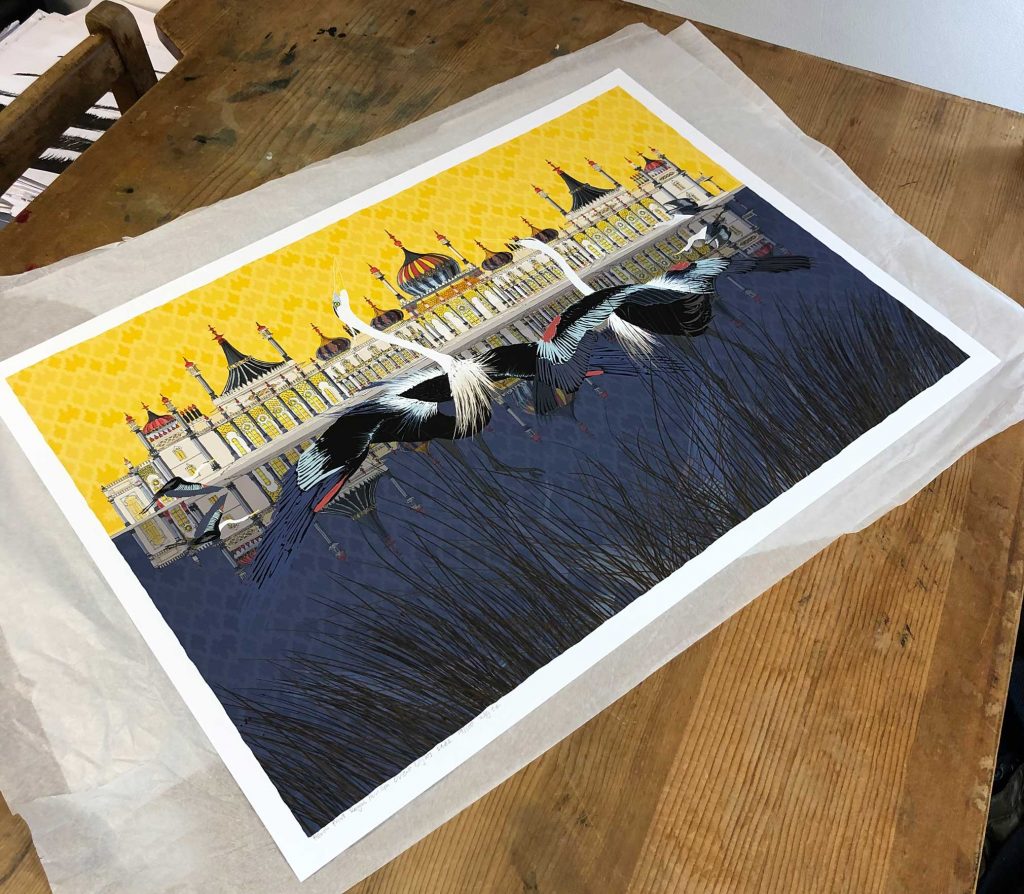

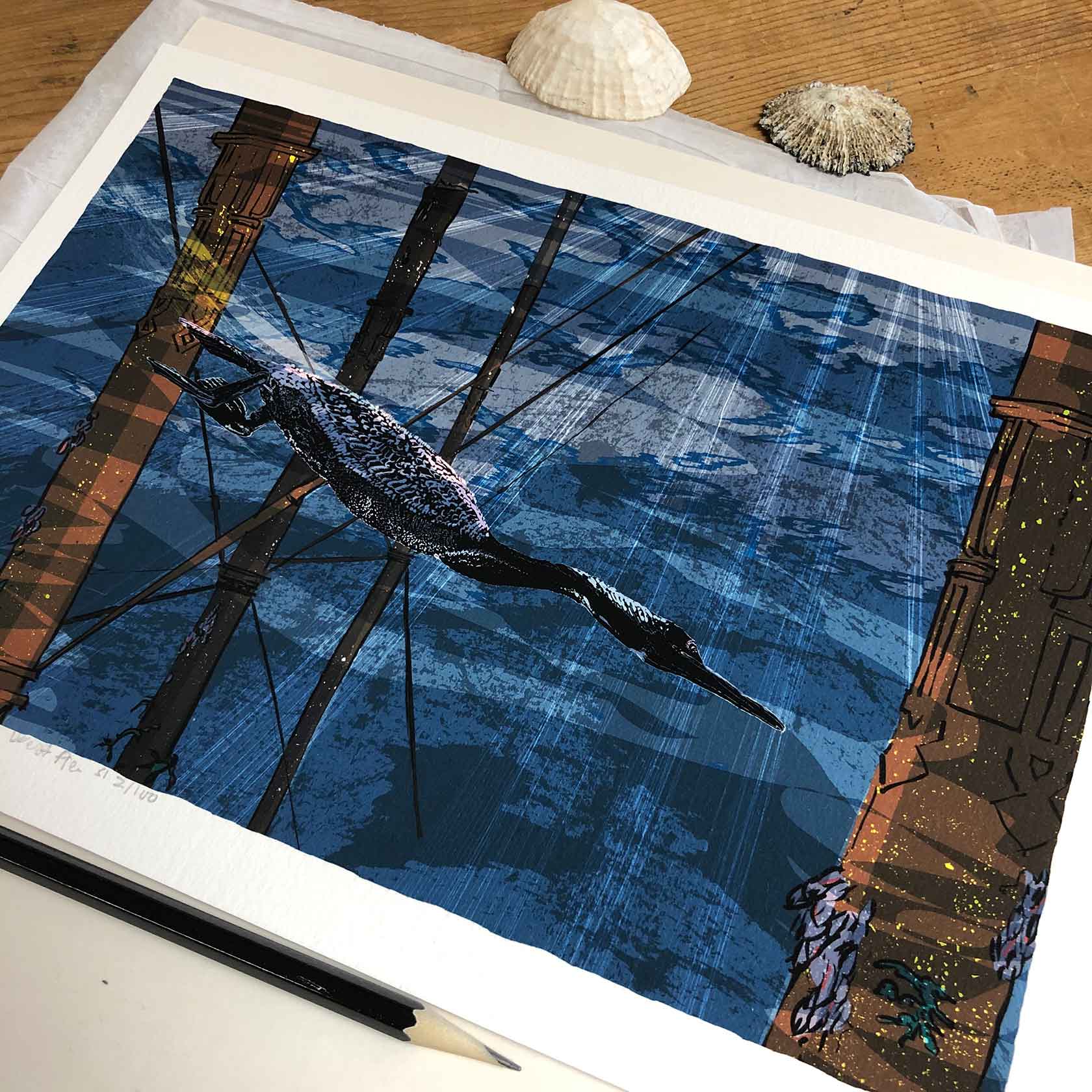
Art print creation process
Each one of my prints starts with a set of ink drawings. I draw specific drawings for textures, main outlines, light and shade. These drawings are later scanned and superimposed digitally. It is similar to the lithographic technique where for different colours or patterns individual plates are created. The final stage involves digitally rendering my designs with colour.
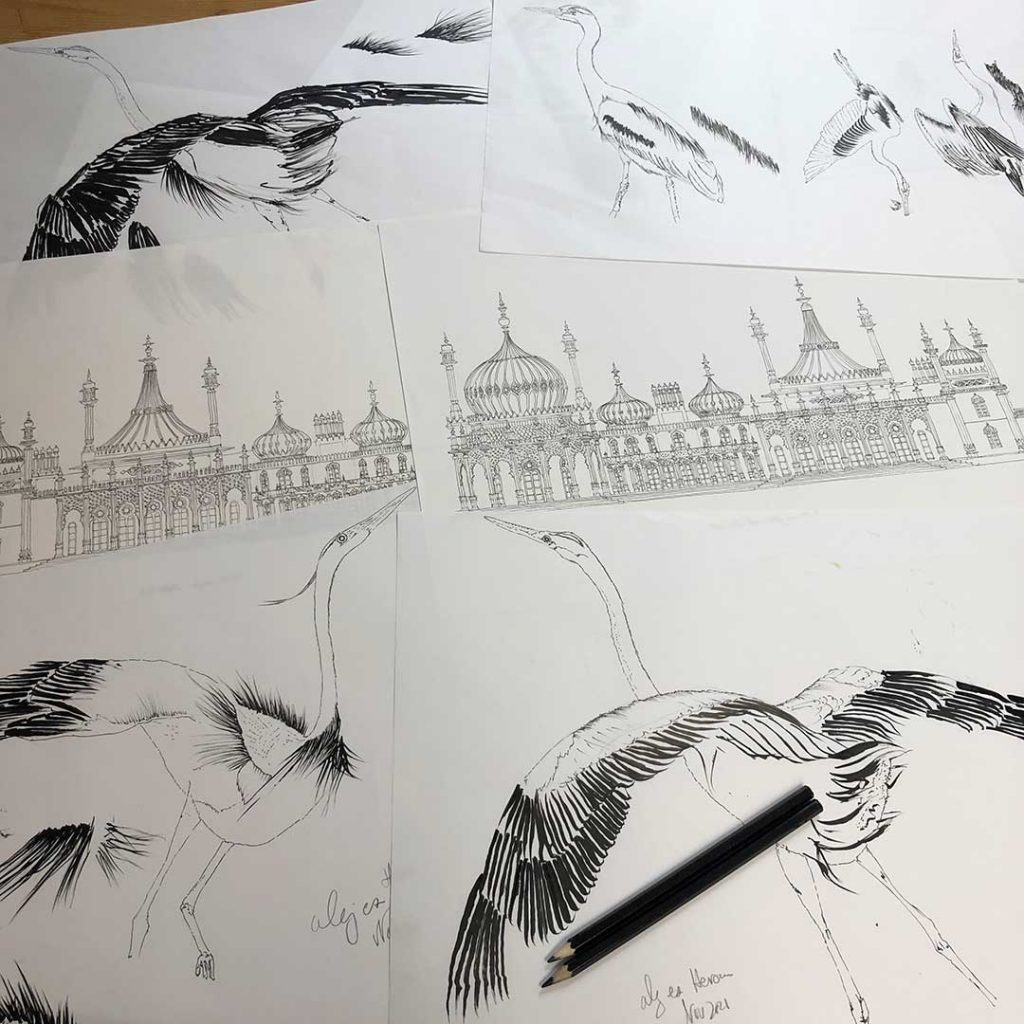
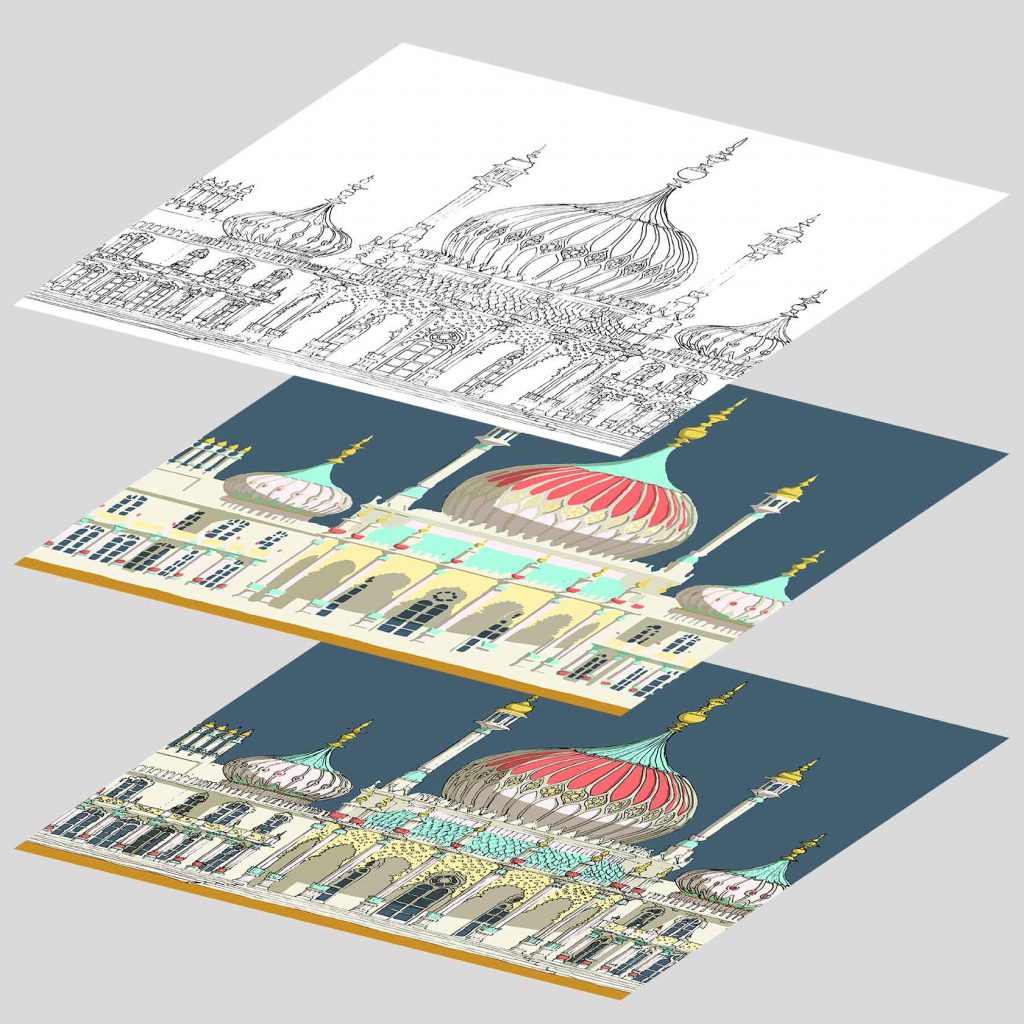
You might like
-
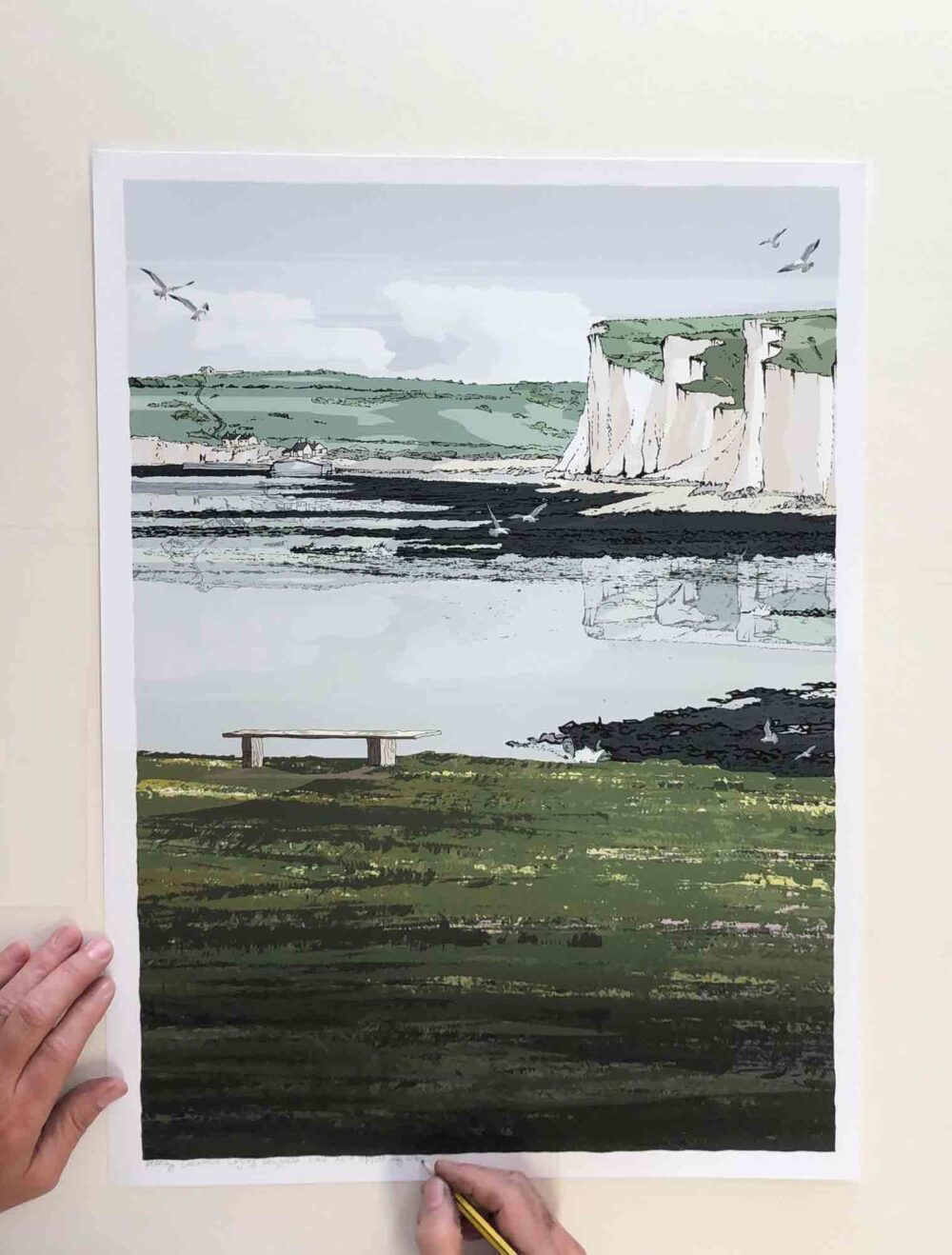
Breezy Cuckmere Crying Seagulls
£40.00 – £310.00 Select options This product has multiple variants. The options may be chosen on the product page -

Cuckmere Haven Starlings
£40.00 – £310.00 Select options This product has multiple variants. The options may be chosen on the product page -

Phoenix and Butterflies Chinoiserie Screen at Brighton Pavilion Gardens
£40.00 – £310.00 Select options This product has multiple variants. The options may be chosen on the product page -
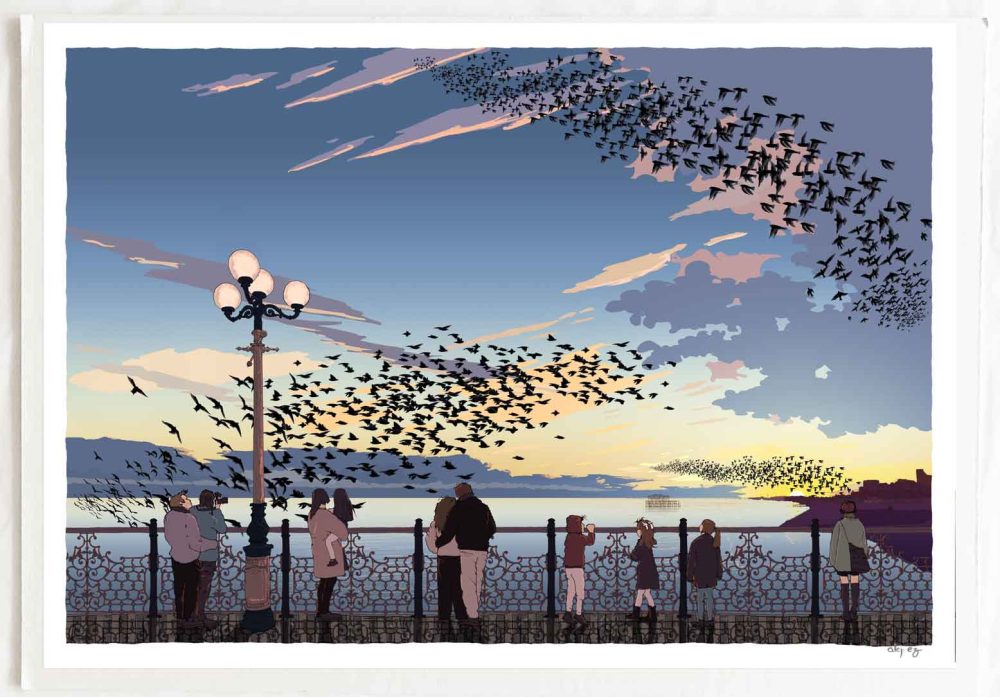
Starling Love Brighton Palace Pier
£40.00 – £310.00 Select options This product has multiple variants. The options may be chosen on the product page -

Golden Spiral Starlings West Pier Pebble Beach
£40.00 – £310.00 Select options This product has multiple variants. The options may be chosen on the product page -
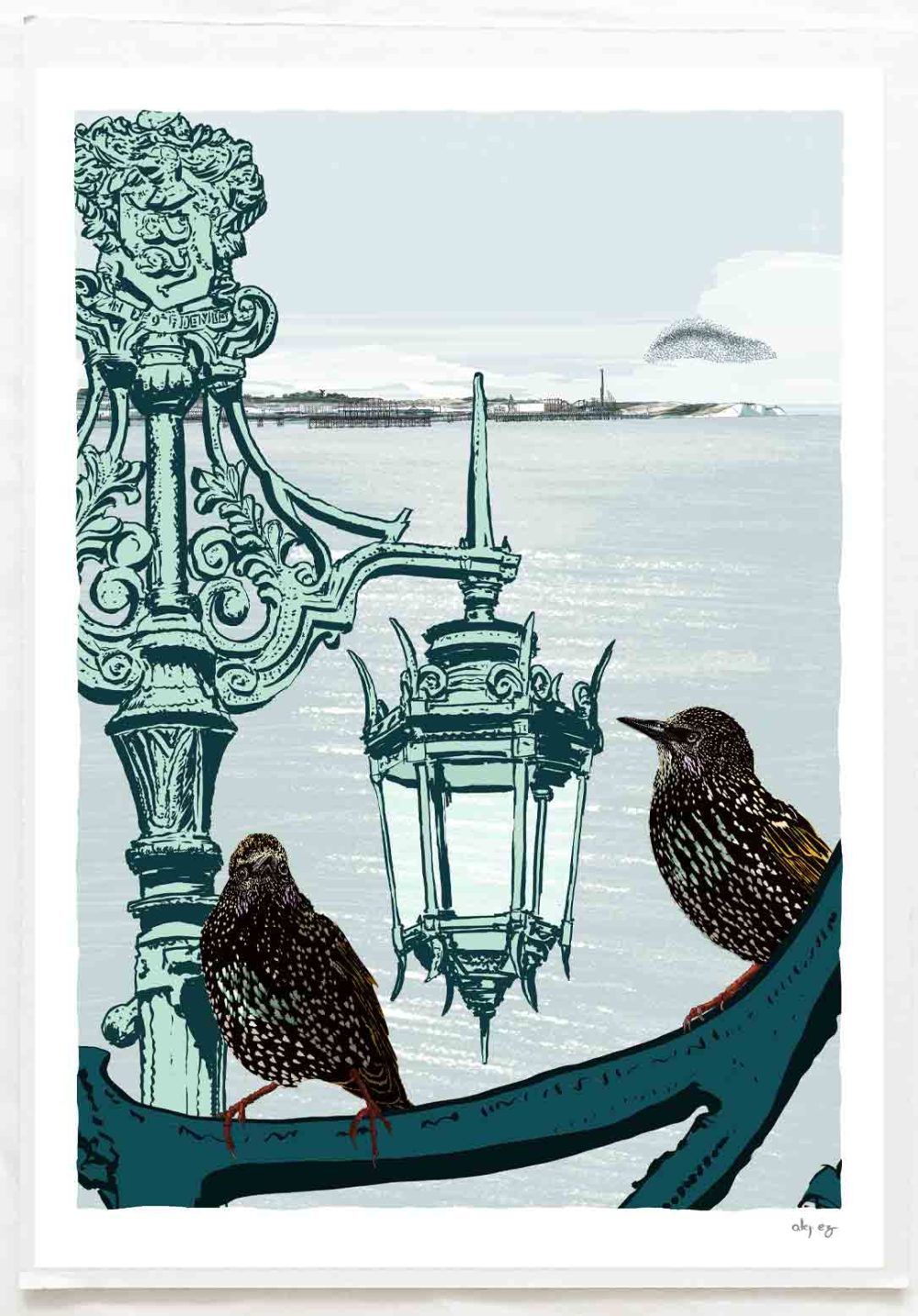
Starlings Murmuration Brighton Lights
£40.00 – £310.00 Select options This product has multiple variants. The options may be chosen on the product page -
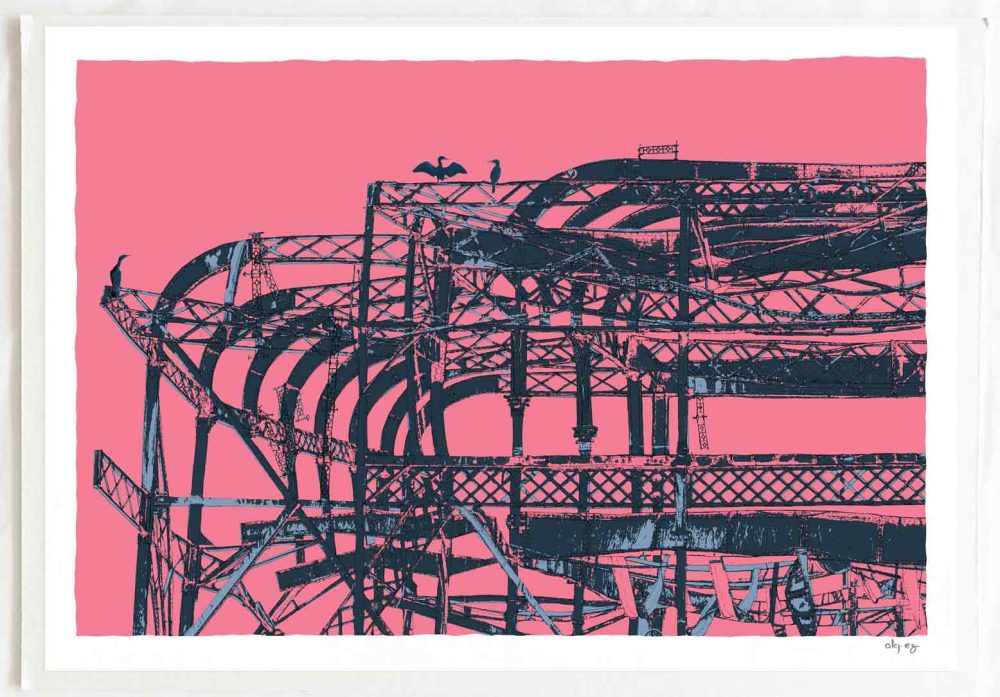
West Pier Cormorants Song Blue
£40.00 – £310.00 Select options This product has multiple variants. The options may be chosen on the product page -

West Pier Cormorants Song
£40.00 – £310.00 Select options This product has multiple variants. The options may be chosen on the product page -

West Pier Cormorants Gesso
£40.00 – £310.00 Select options This product has multiple variants. The options may be chosen on the product page -

Cherry Blossom and Blue Tits at Brunswick Square
£40.00 – £310.00 Select options This product has multiple variants. The options may be chosen on the product page -

Brunswick Square The Sparrow and the Corinthian Dog Rose
£40.00 – £310.00 Select options This product has multiple variants. The options may be chosen on the product page -

Cherry Blossom and Blue Tits at Pavilion Gardens by the Dome Brighton
£40.00 – £310.00 Select options This product has multiple variants. The options may be chosen on the product page -

Pigeon Song Pavilion Gardens Brighton
£40.00 – £310.00 Select options This product has multiple variants. The options may be chosen on the product page -
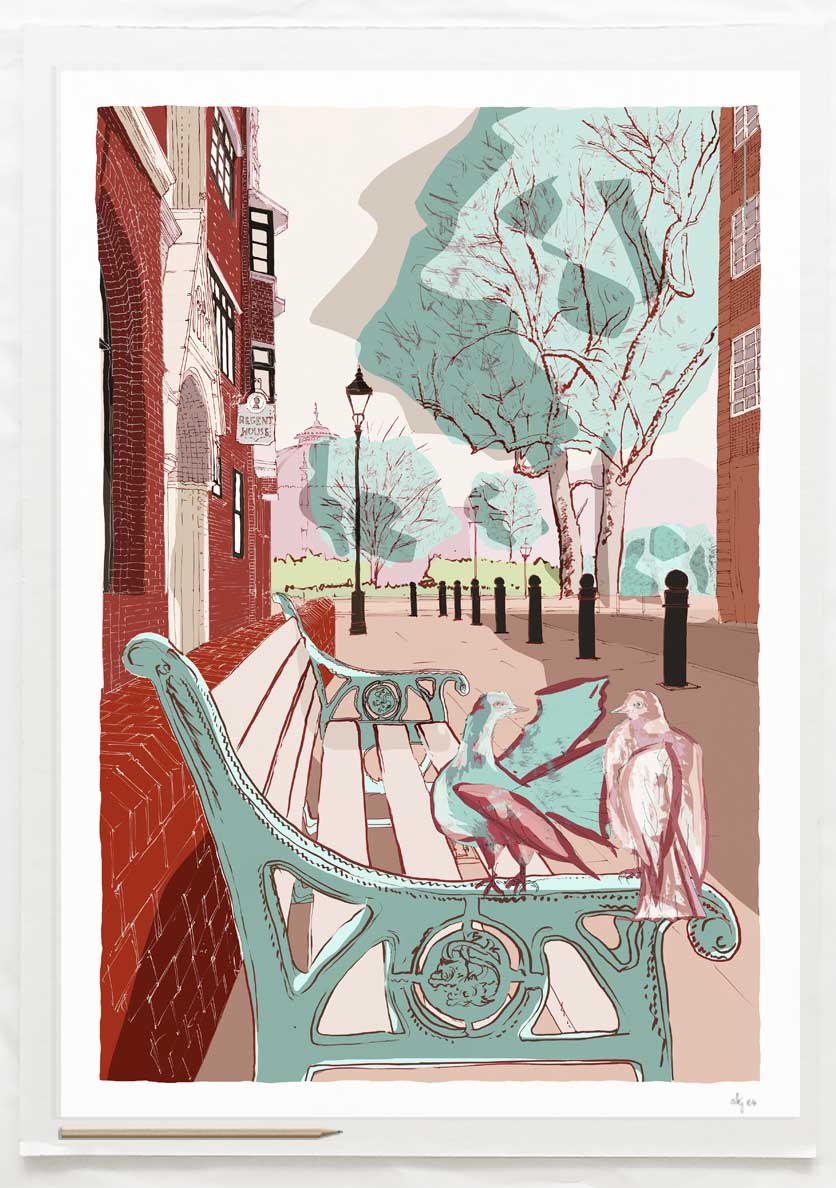
Prince’s Place Love Pigeons Pavilion Gardens by the Dome
£40.00 – £310.00 Select options This product has multiple variants. The options may be chosen on the product page -

An Alphabet of Brighton
£40.00 – £310.00 Select options This product has multiple variants. The options may be chosen on the product page -
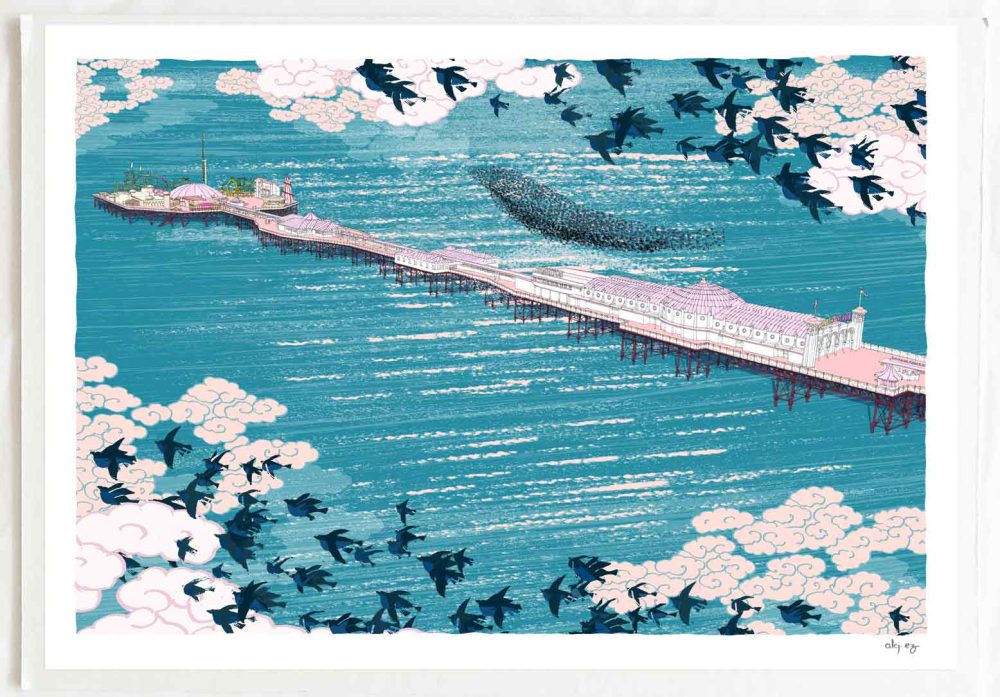
Palace Pier Starling Song
£40.00 – £310.00 Select options This product has multiple variants. The options may be chosen on the product page -

The Lark Ascending over the Lewes Town
£40.00 – £310.00 Select options This product has multiple variants. The options may be chosen on the product page -
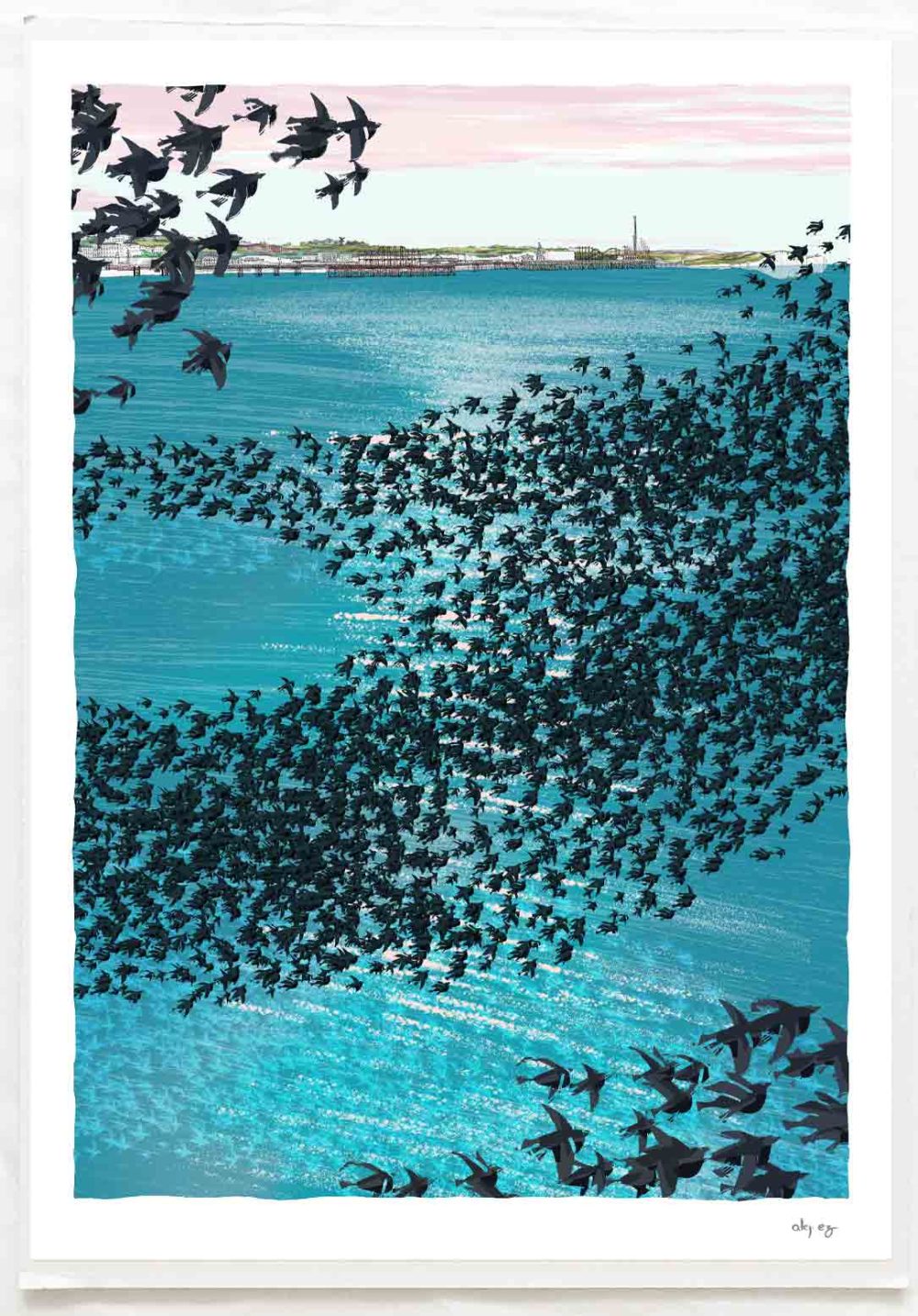
Shoreline Starlings Brighton by the Sea
£40.00 – £310.00 Select options This product has multiple variants. The options may be chosen on the product page -
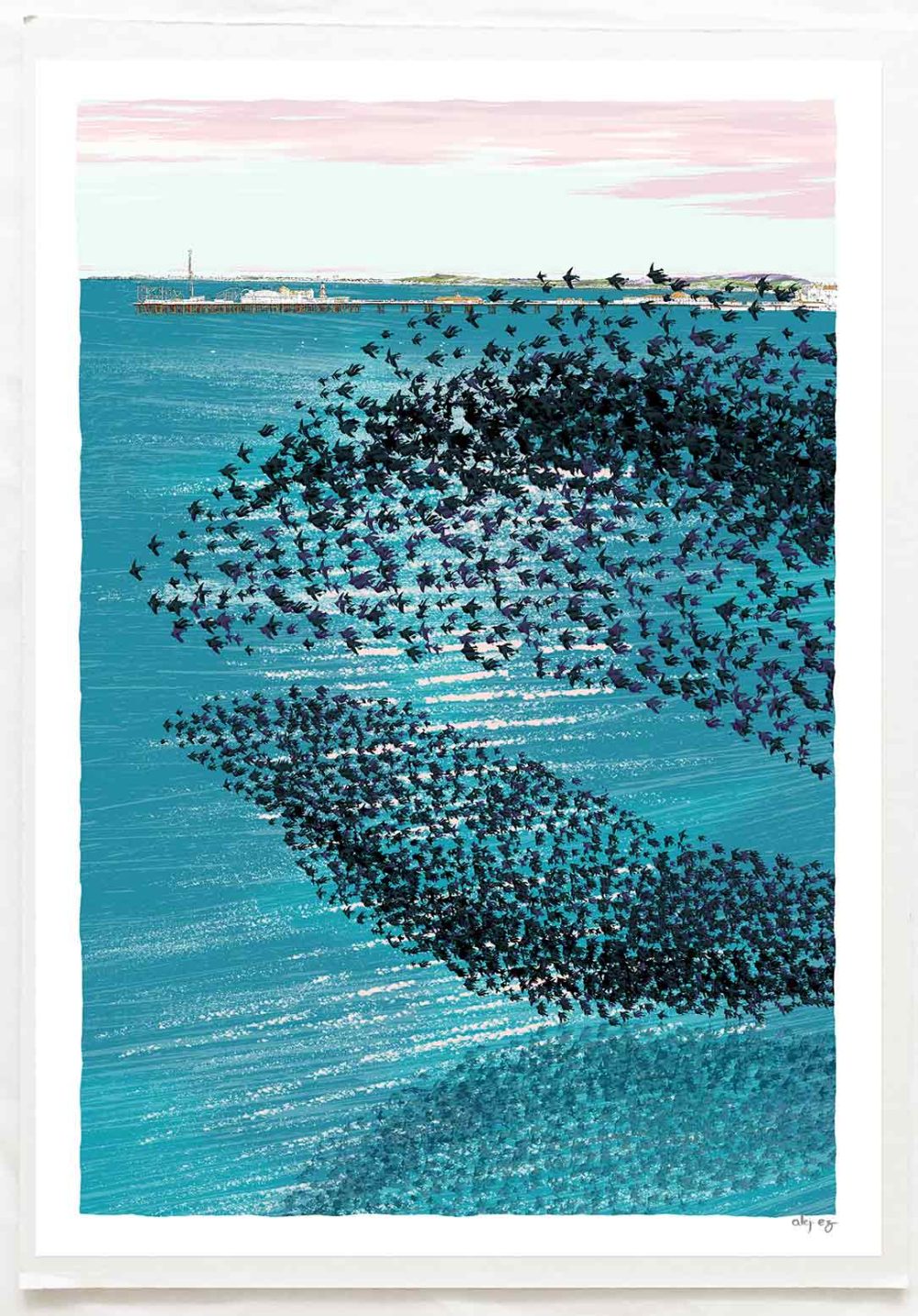
Starlings Kemptown Brighton Seafront Ocean Blue
£40.00 – £310.00 Select options This product has multiple variants. The options may be chosen on the product page -

Morning Swim Worthing
£40.00 – £180.00 Select options This product has multiple variants. The options may be chosen on the product page -
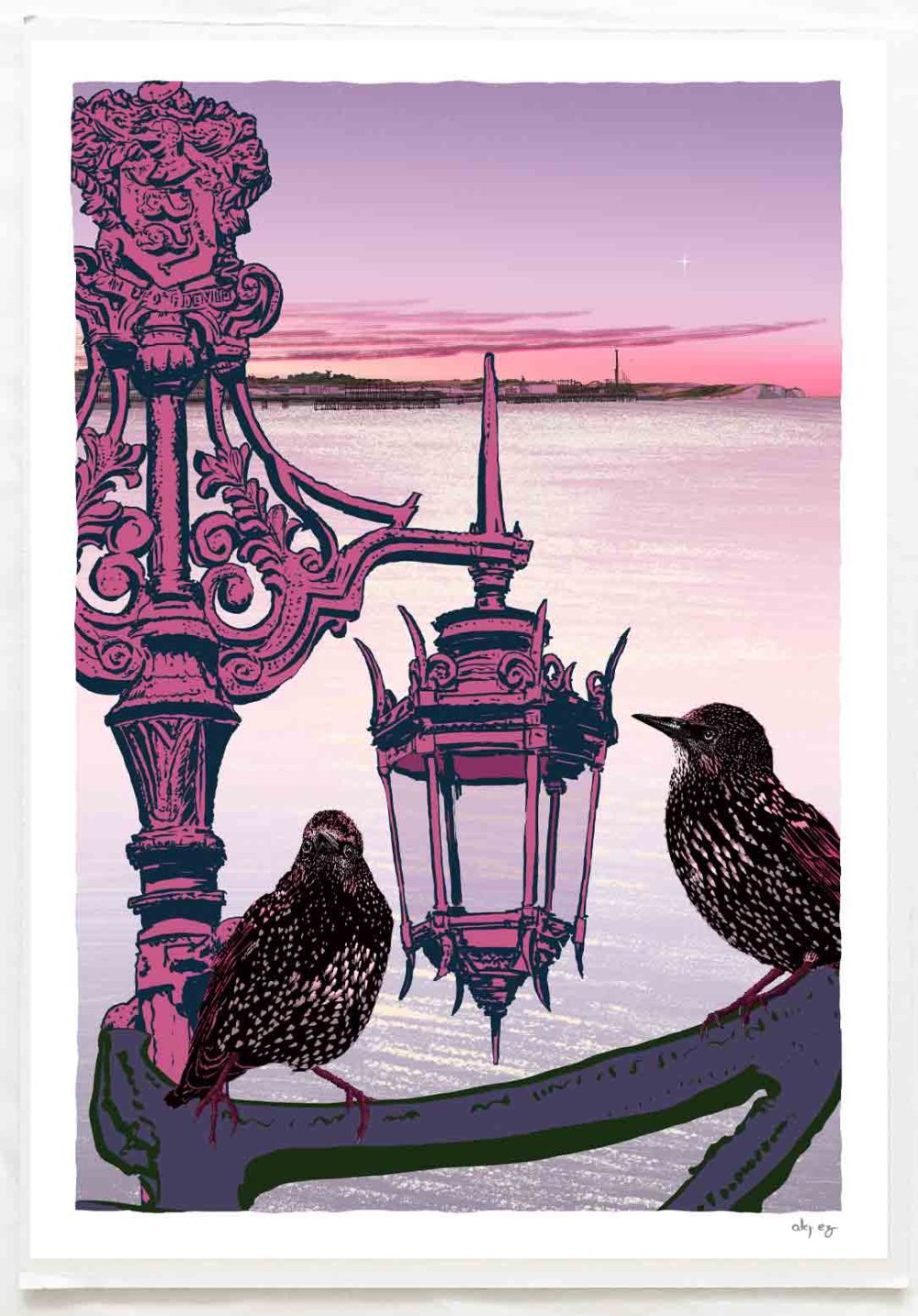
Starlight Starlings Brighton
£40.00 – £310.00 Select options This product has multiple variants. The options may be chosen on the product page -
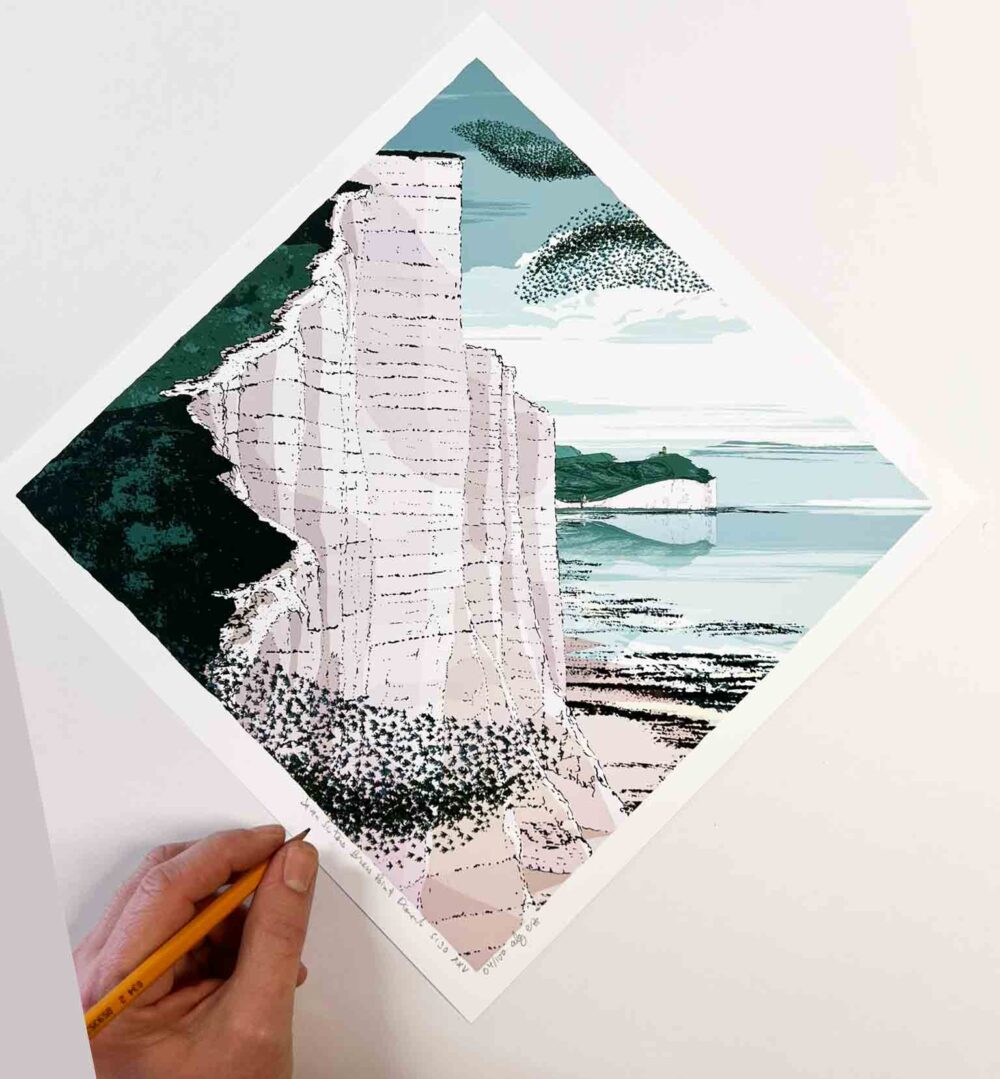
Seven Sisters Cliffs Walk Brass Point Diamond
£48.00 – £120.00 Select options This product has multiple variants. The options may be chosen on the product page -
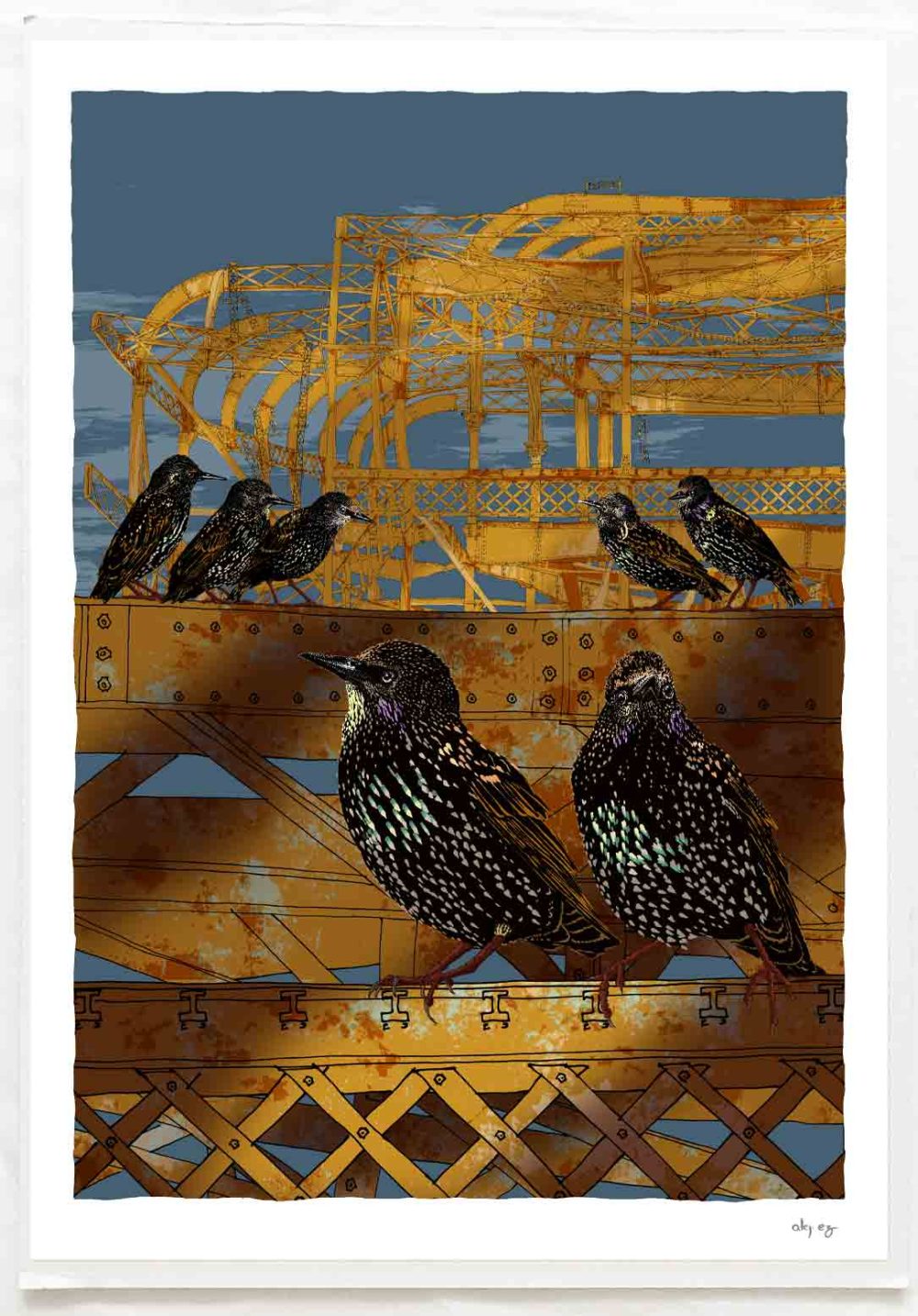
West Pier Starling Song Antique Ochre and Blue
£40.00 – £310.00 Select options This product has multiple variants. The options may be chosen on the product page -
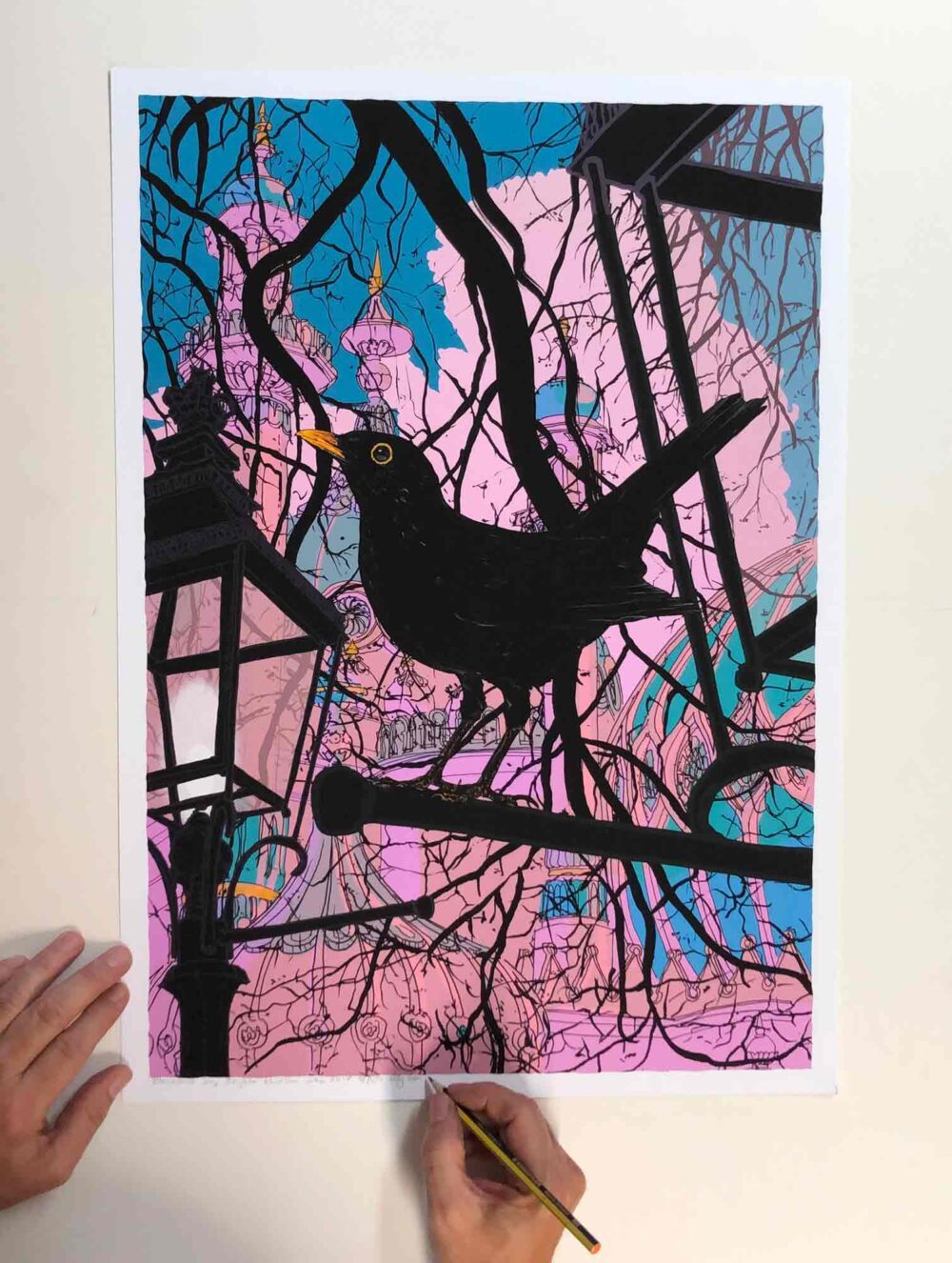
Brighton Pavilion Early Morn Blackbird Song
£40.00 – £310.00 Select options This product has multiple variants. The options may be chosen on the product page -

Starling Murmuration over the West Pier at Brighton Beach
£40.00 – £310.00 Select options This product has multiple variants. The options may be chosen on the product page -
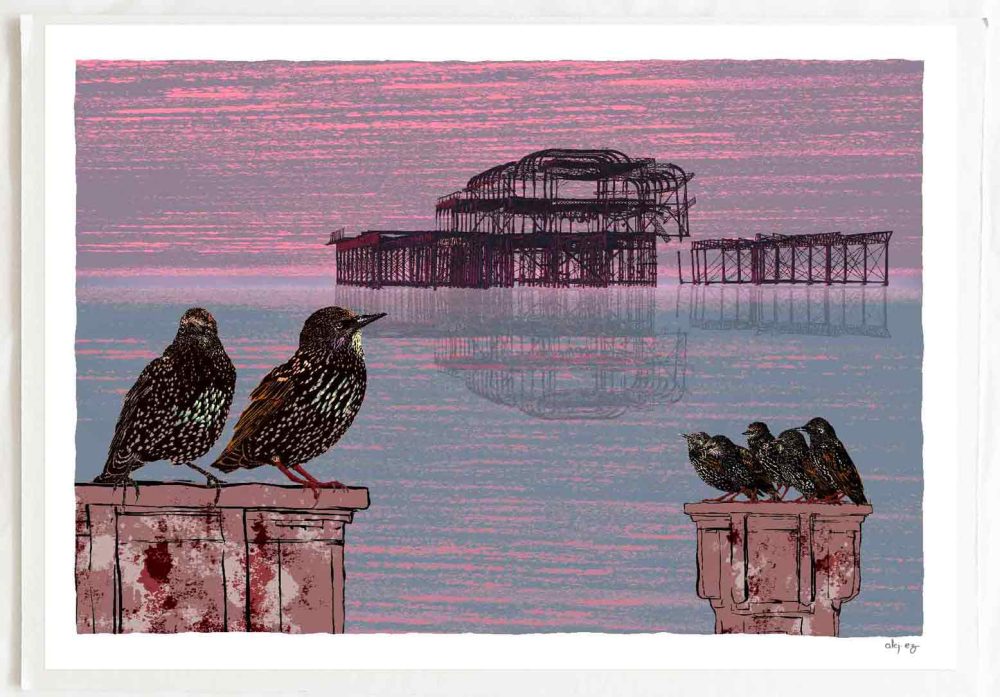
Golden Spiral Starlings West Pier
£40.00 – £310.00 Select options This product has multiple variants. The options may be chosen on the product page -
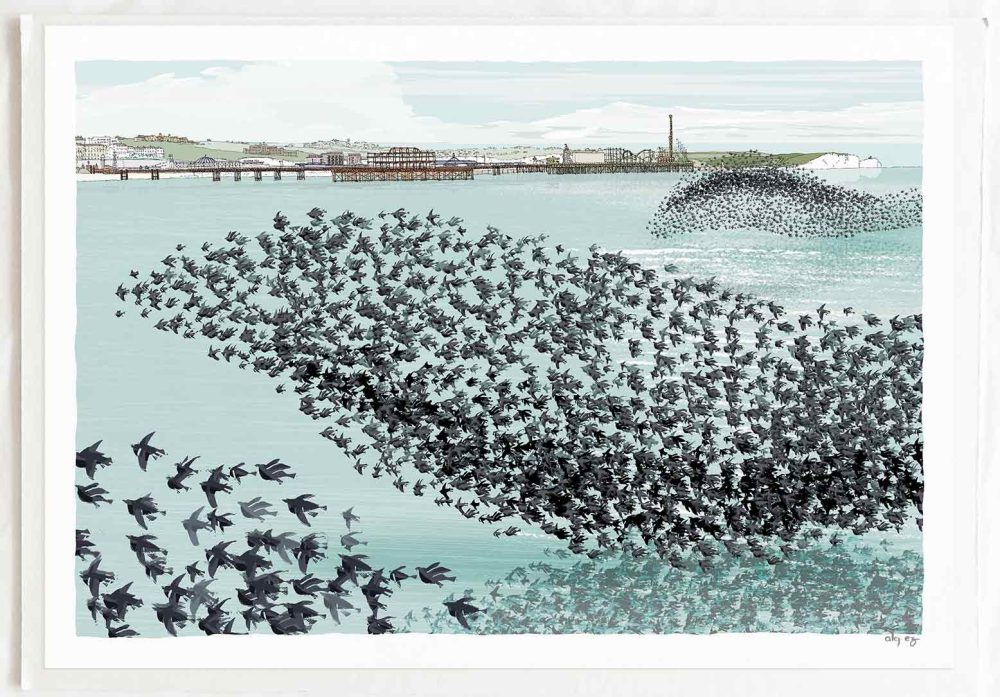
Shoreline Starlings Brighton by the Sea Pebble Beach
£40.00 – £310.00 Select options This product has multiple variants. The options may be chosen on the product page -

1882 Seaford Beach Steamship Gannet
£40.00 – £310.00 Select options This product has multiple variants. The options may be chosen on the product page -
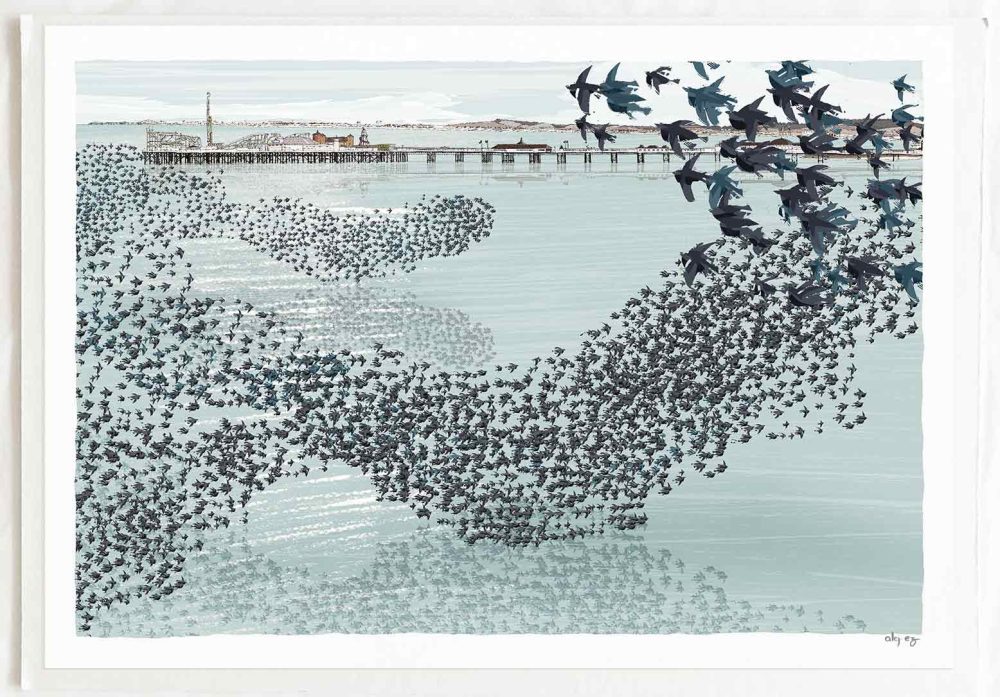
Starlings Kemptown Brighton Seafront Pebble Beach
£40.00 – £310.00 Select options This product has multiple variants. The options may be chosen on the product page -

Birling Gap Starling Murmuration White Cliffs
£192.00 add to basket
